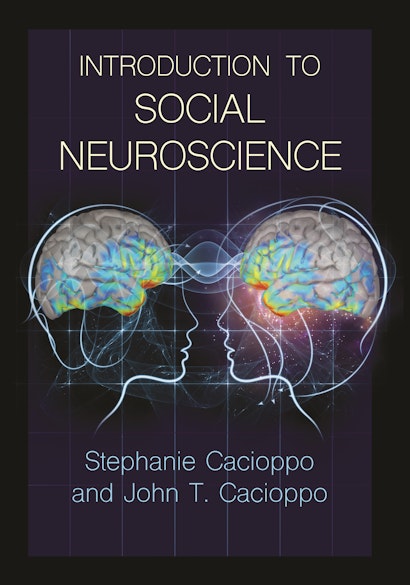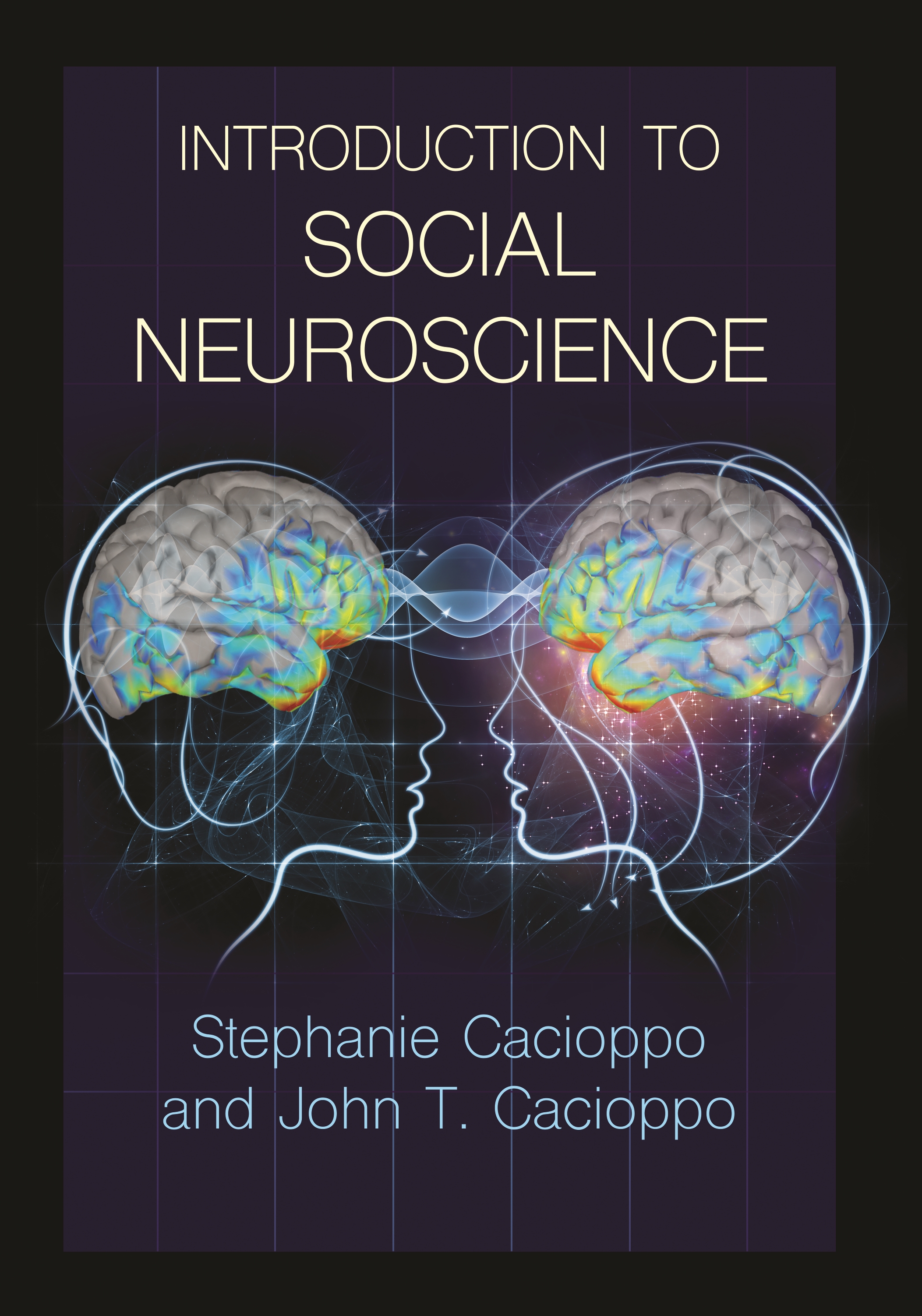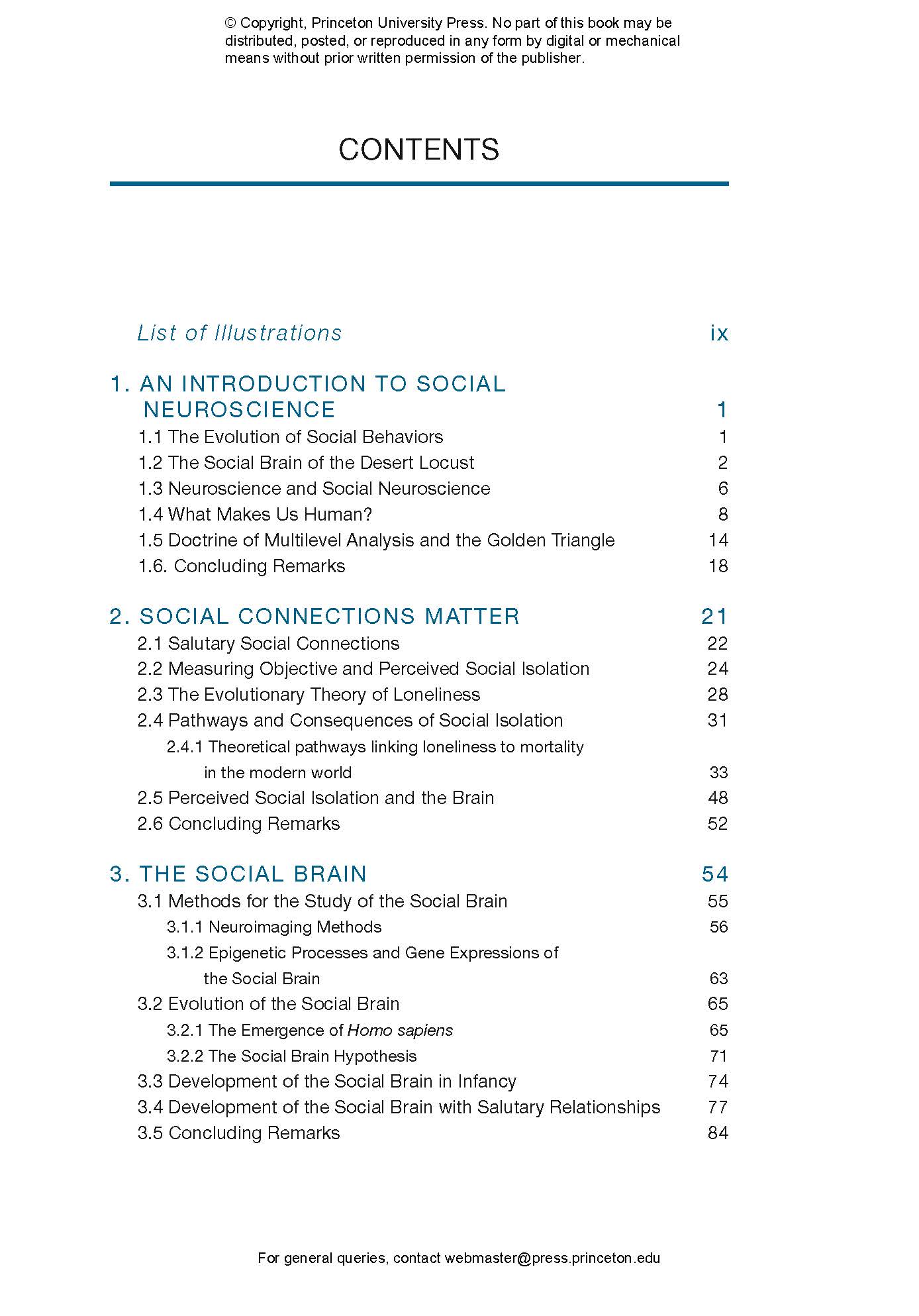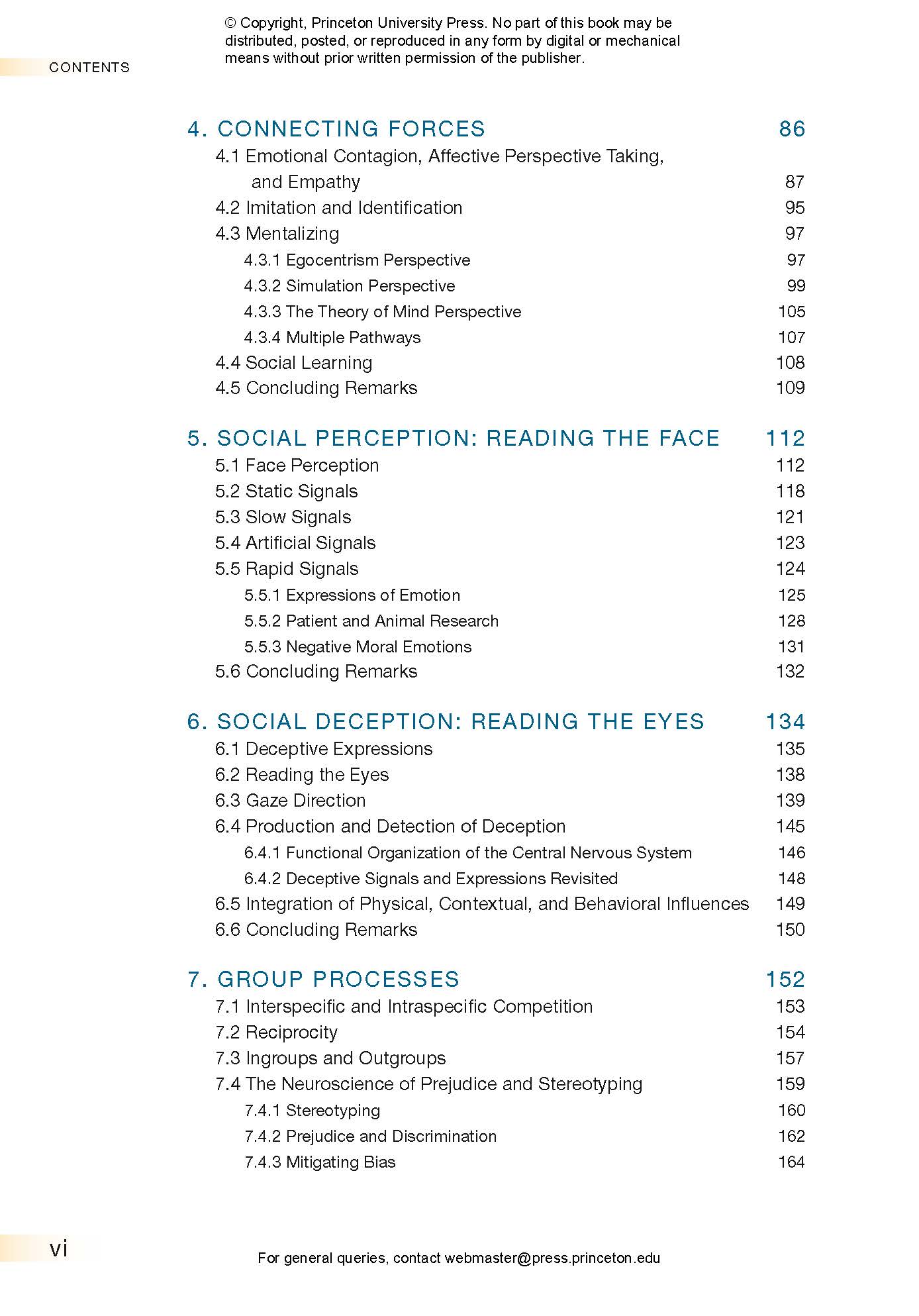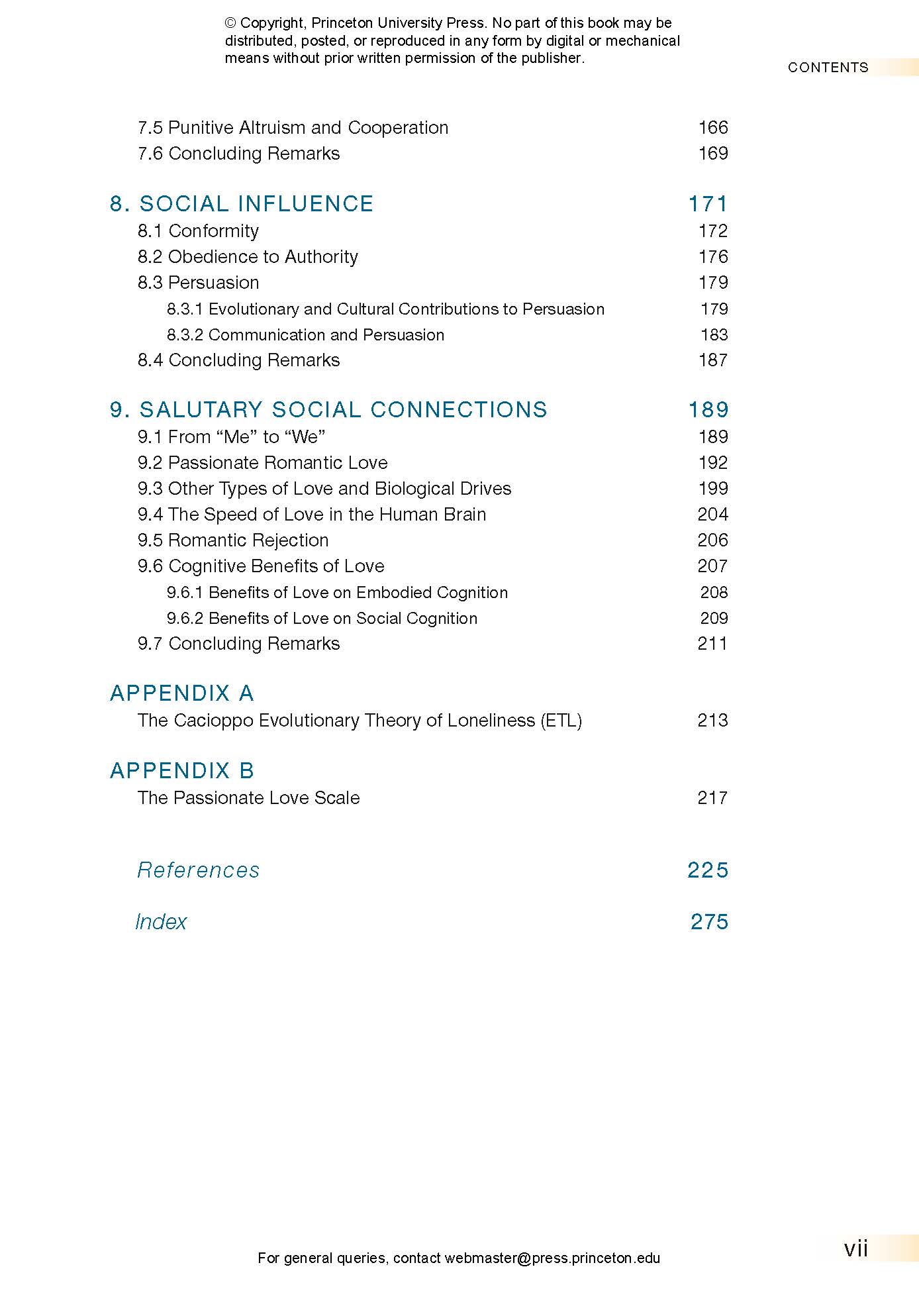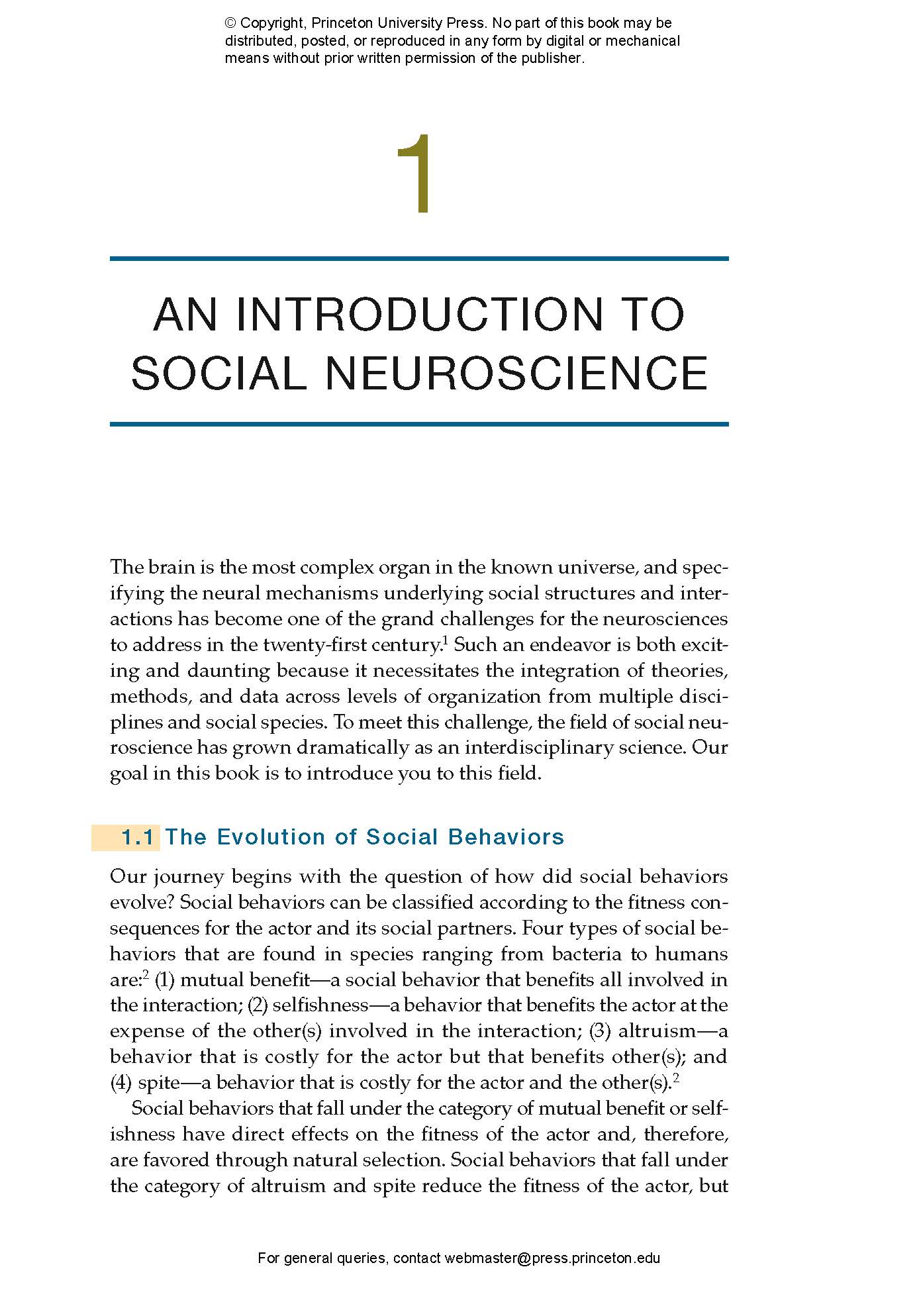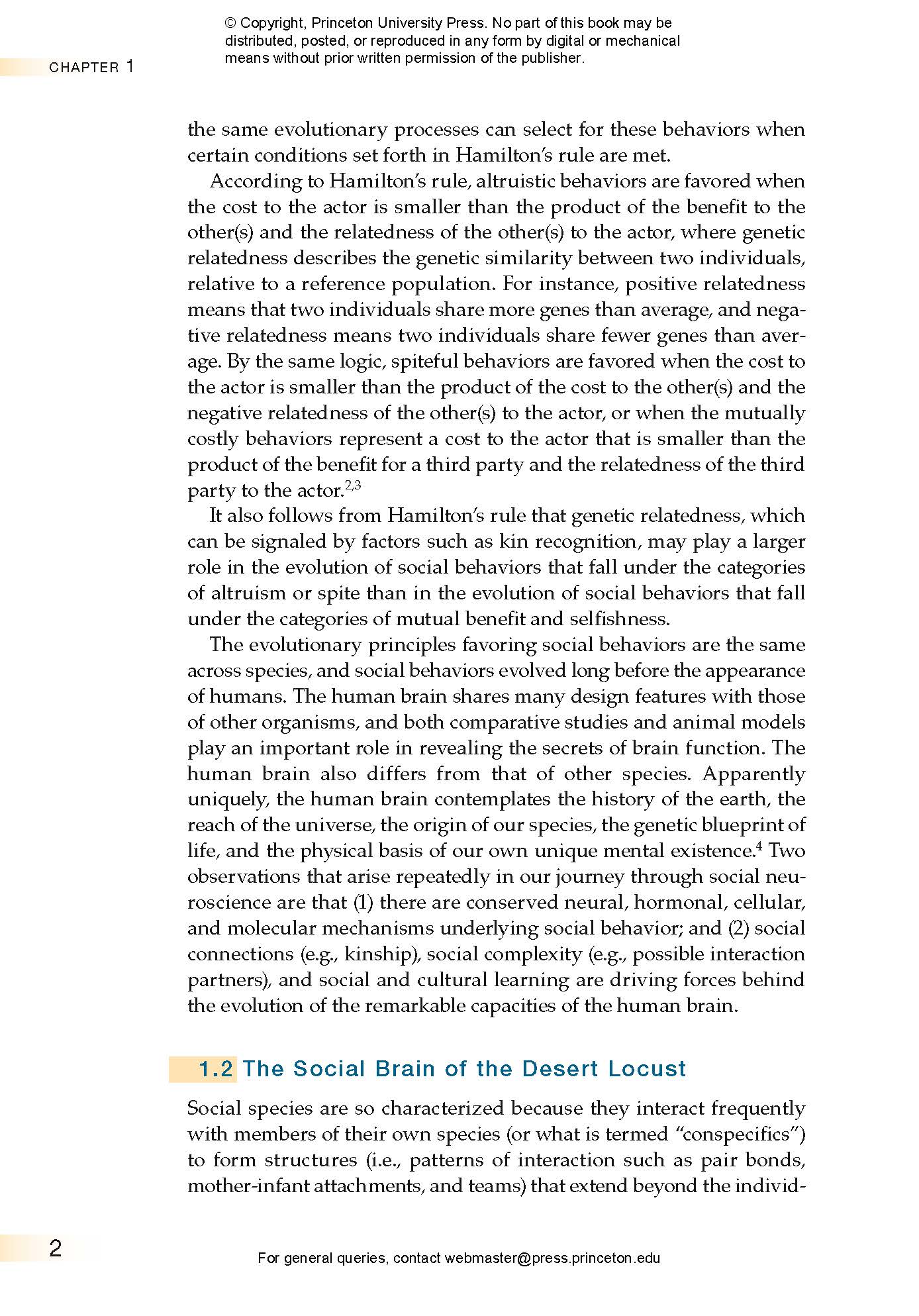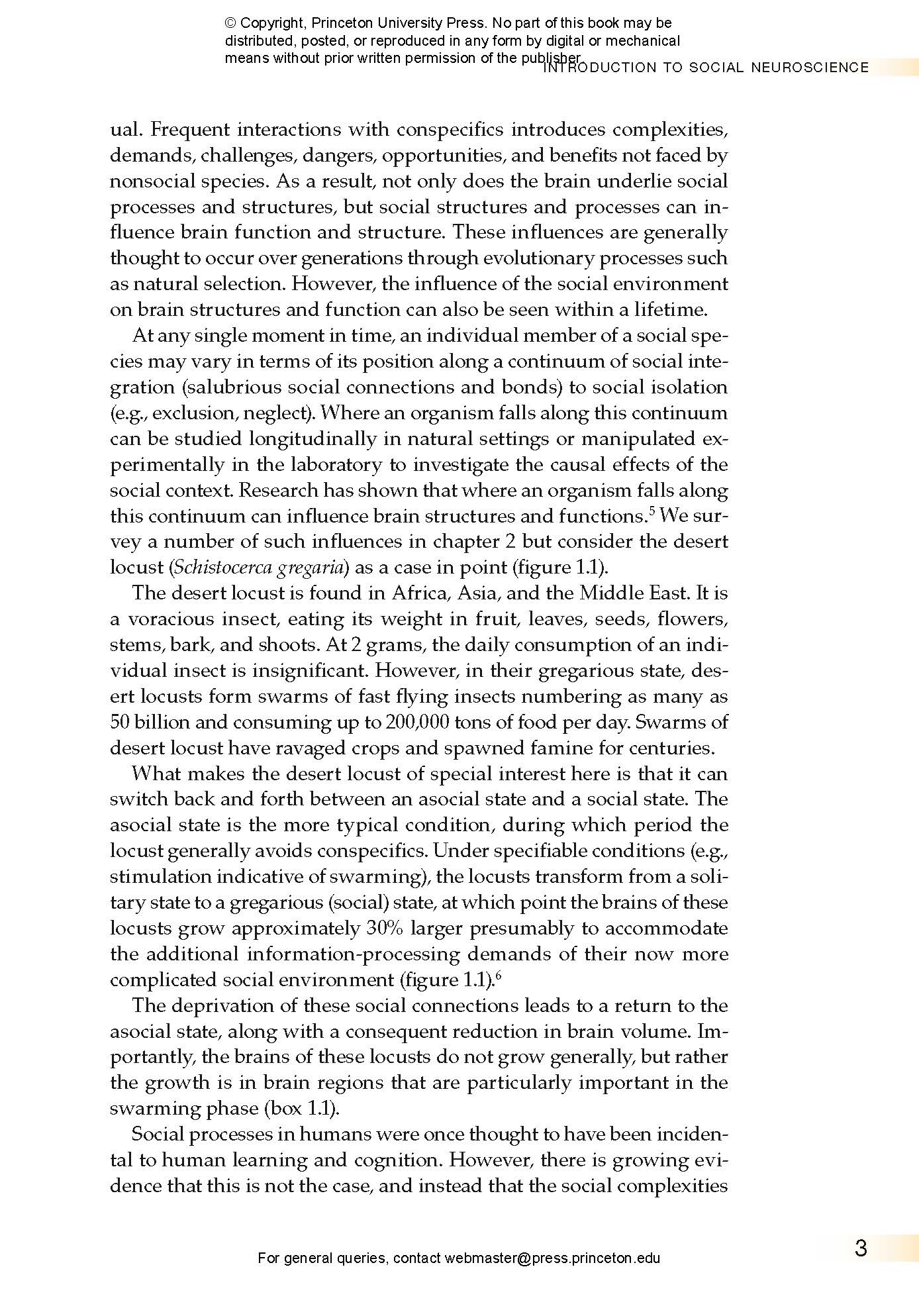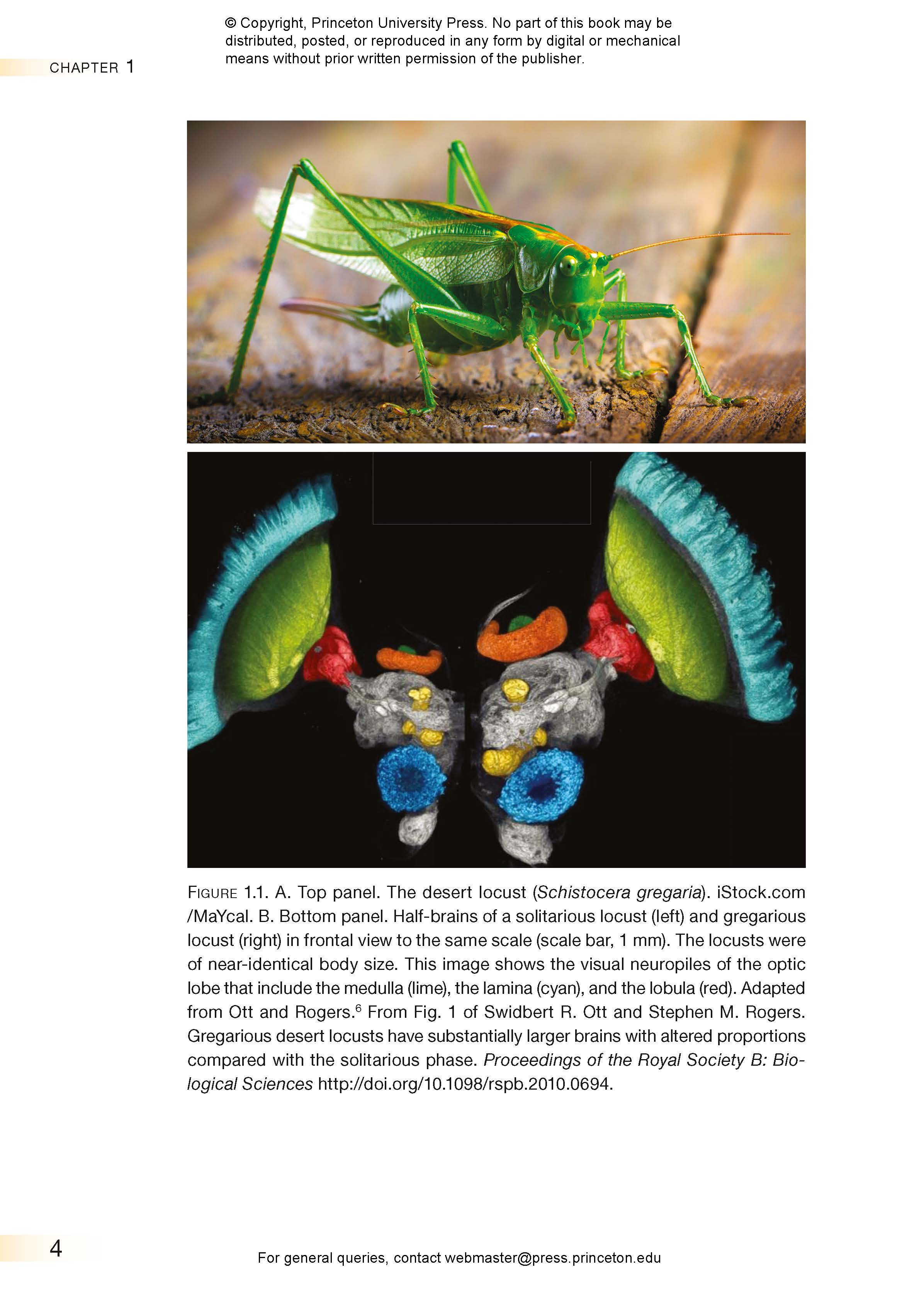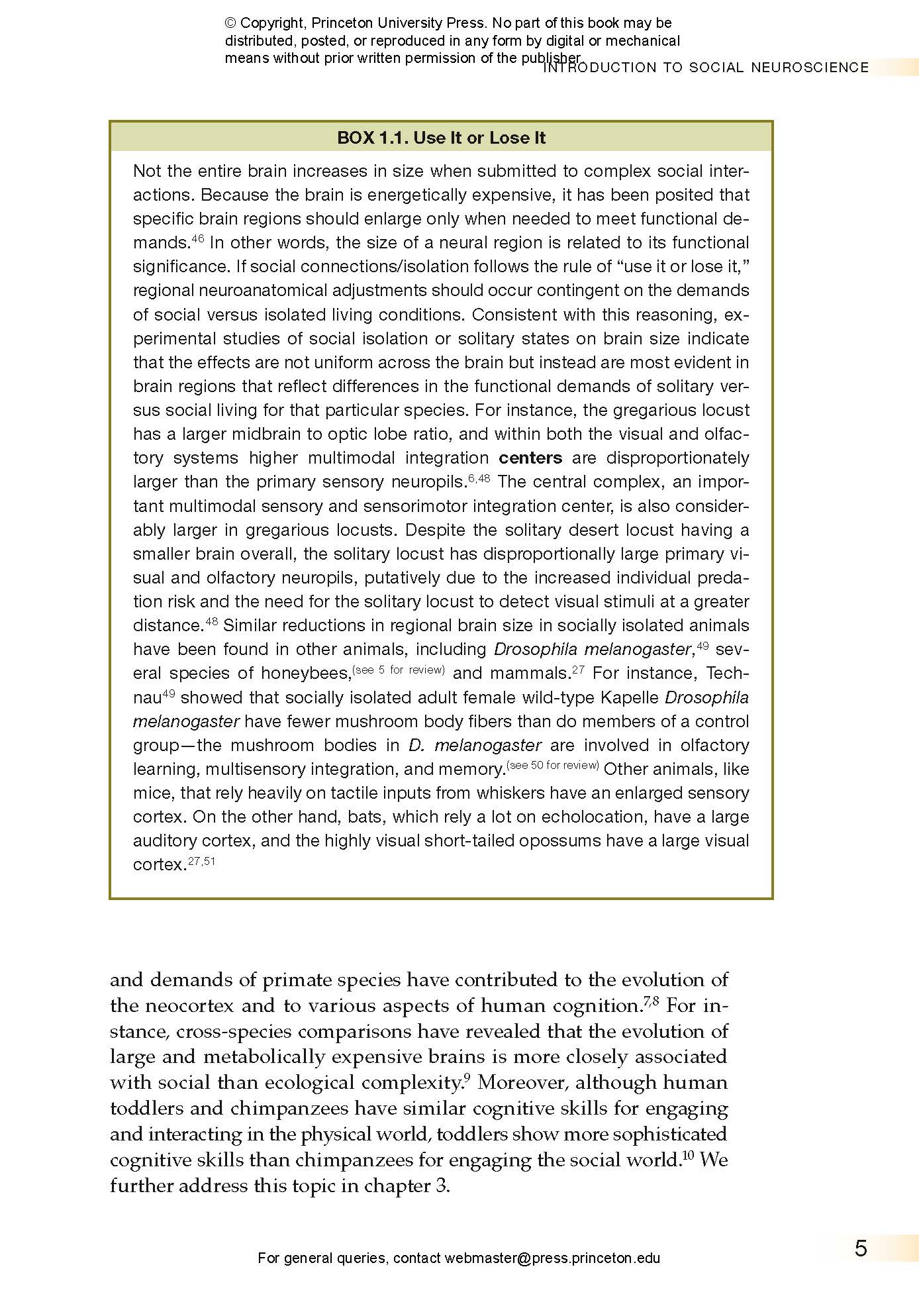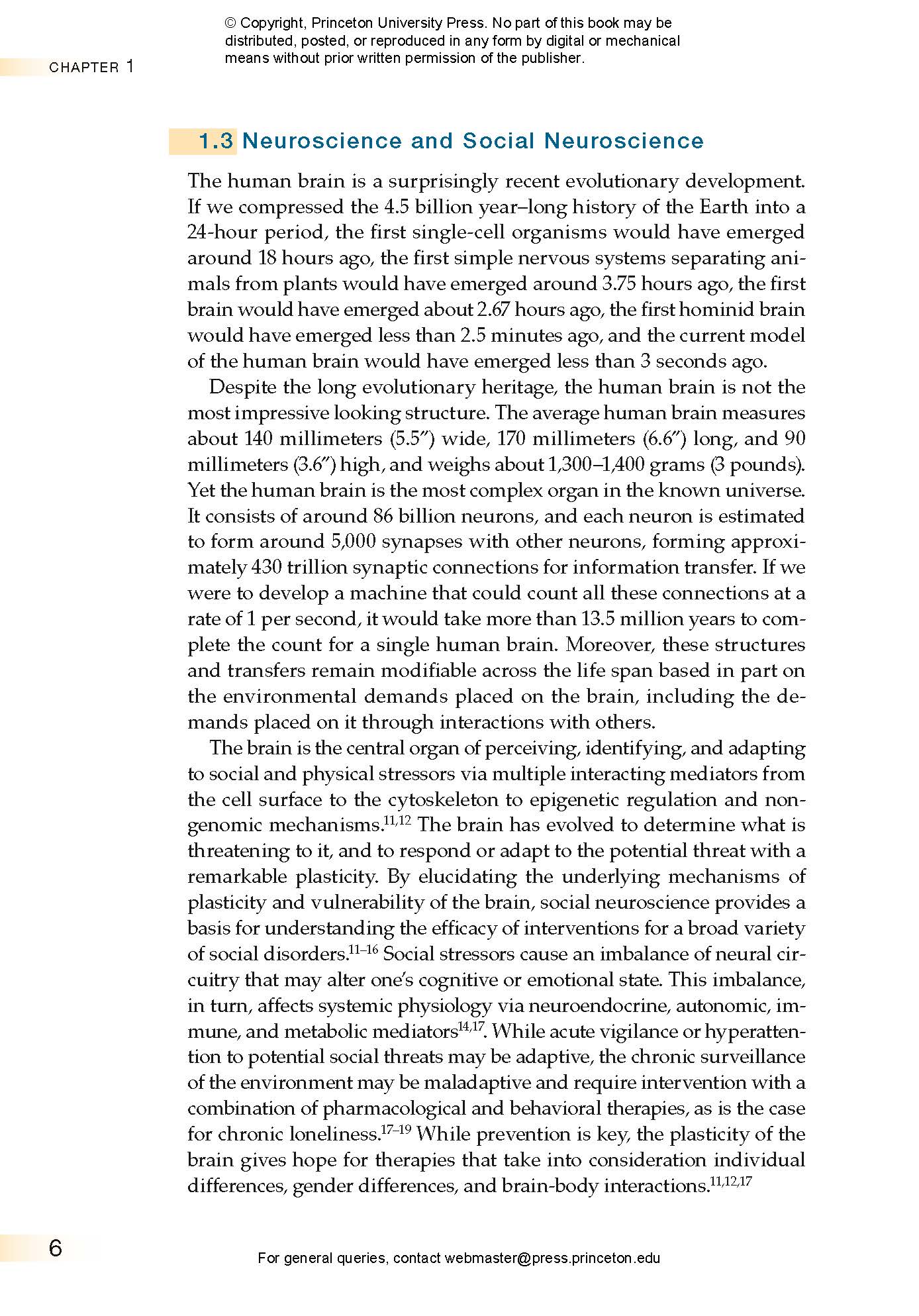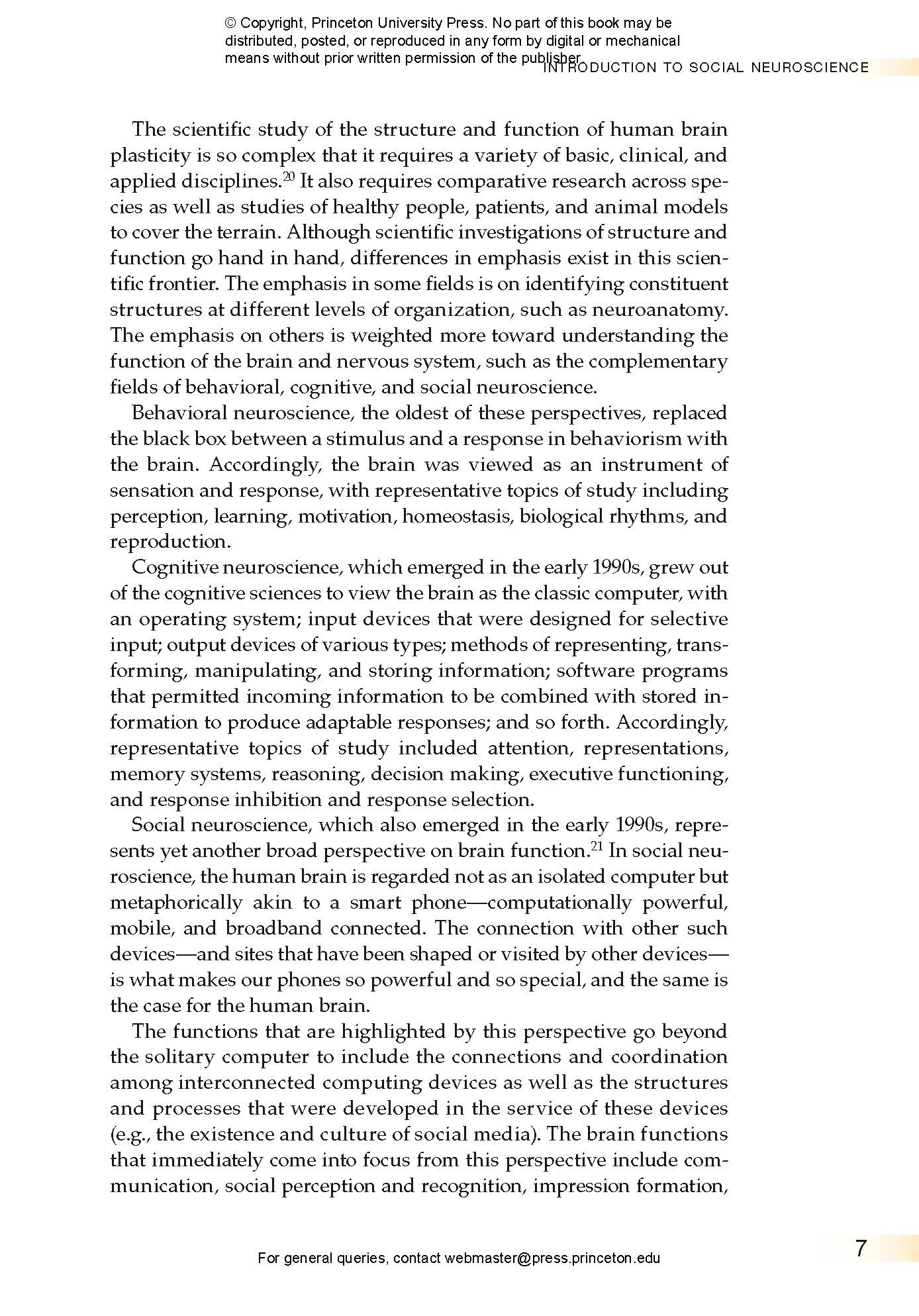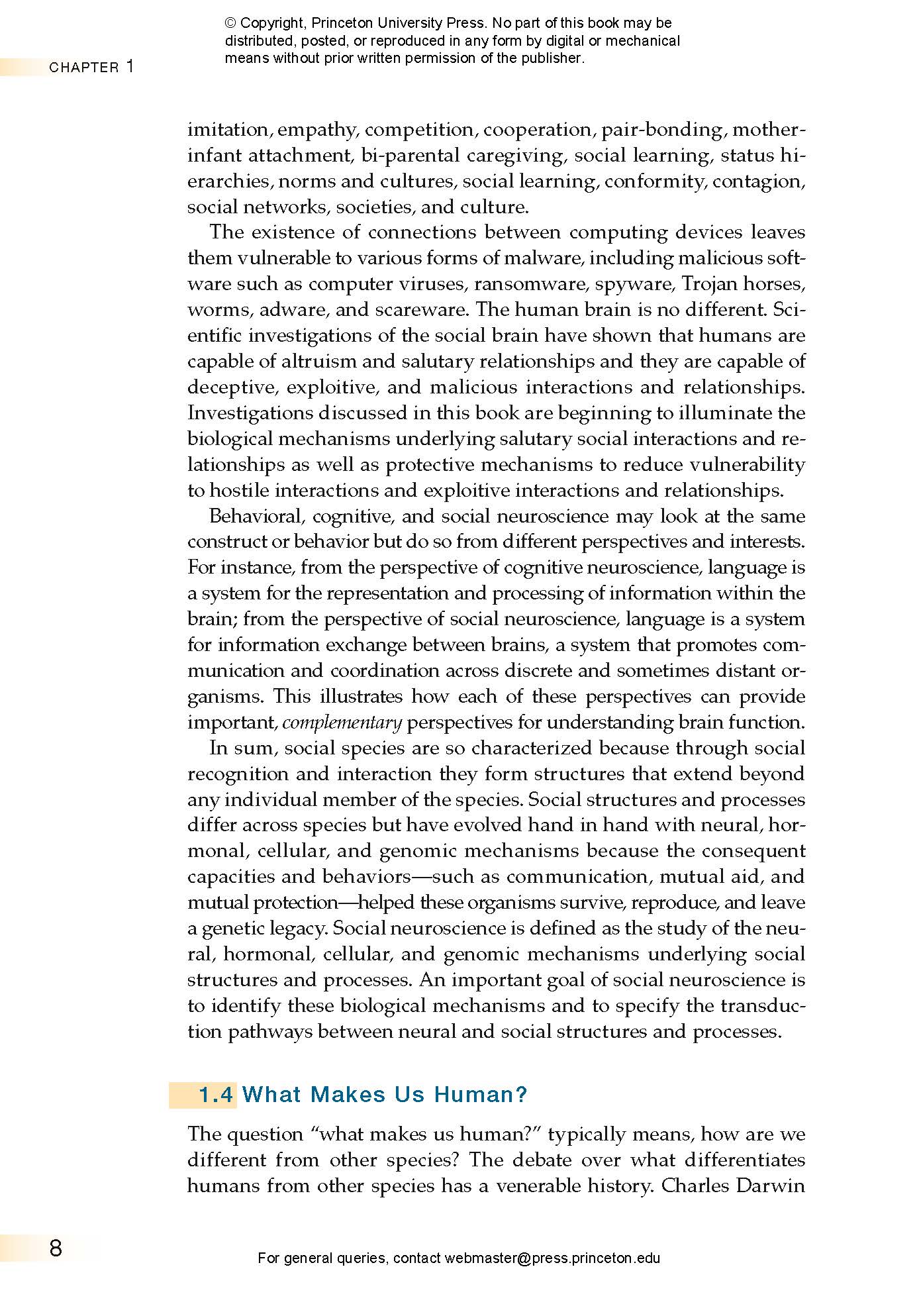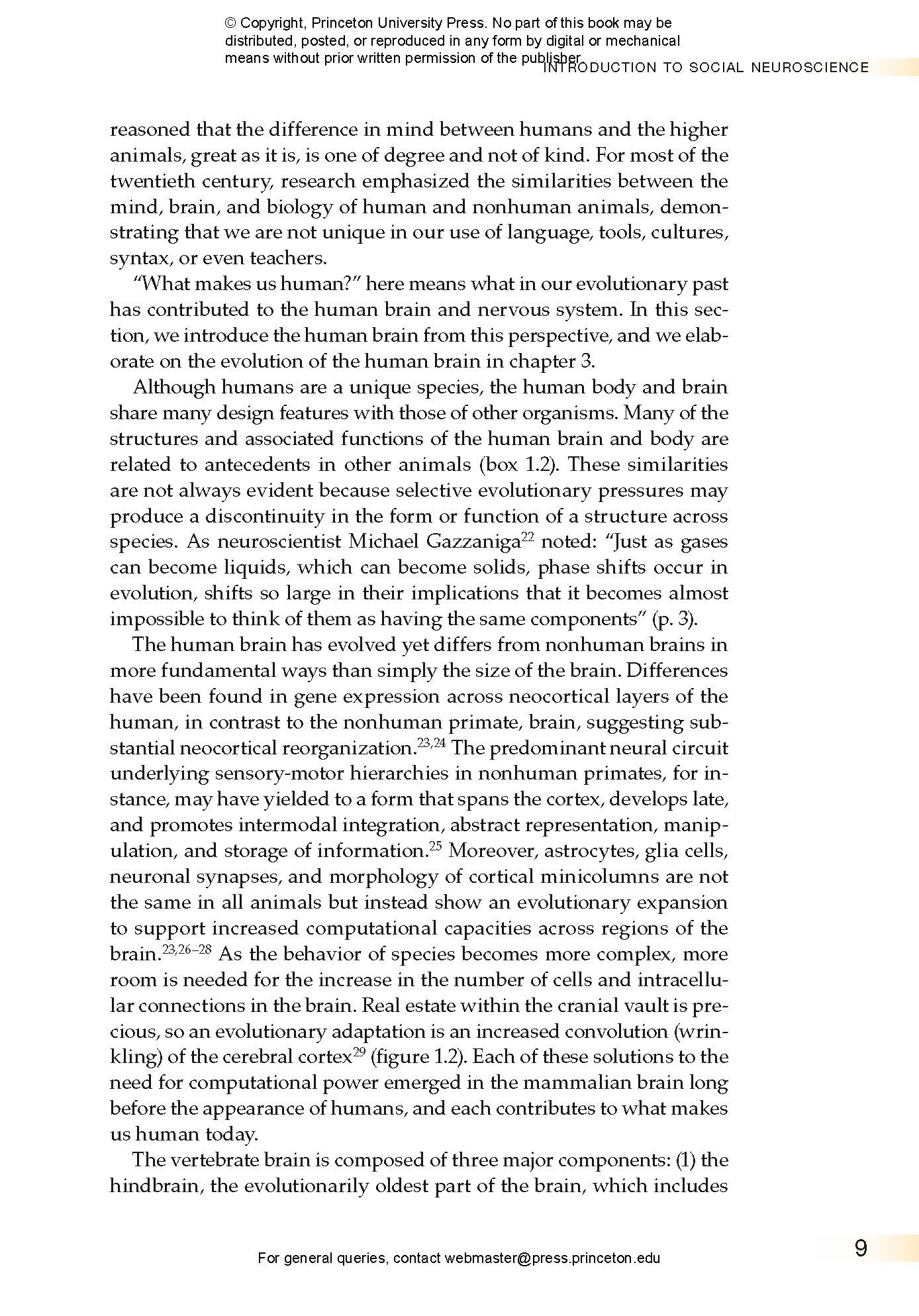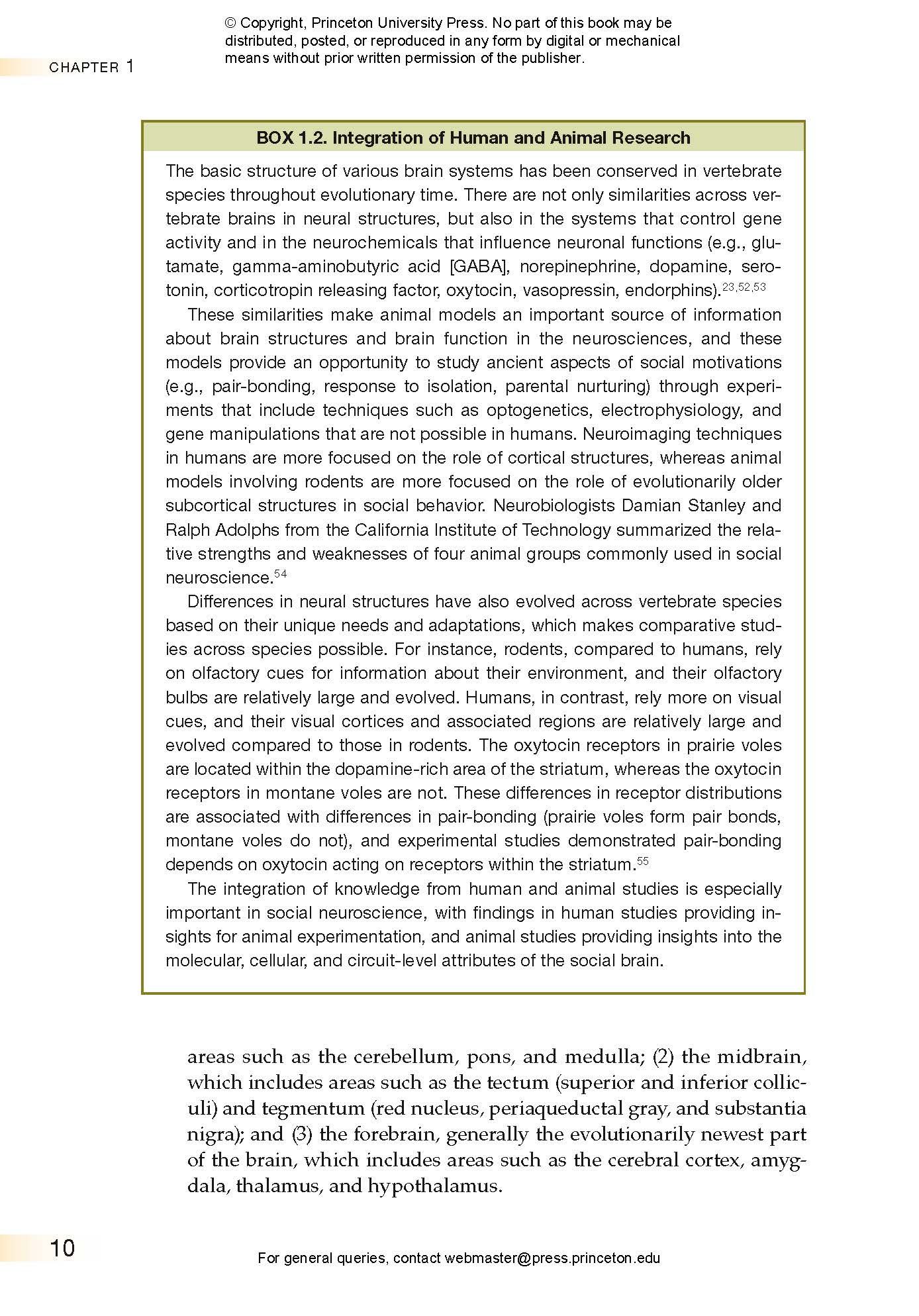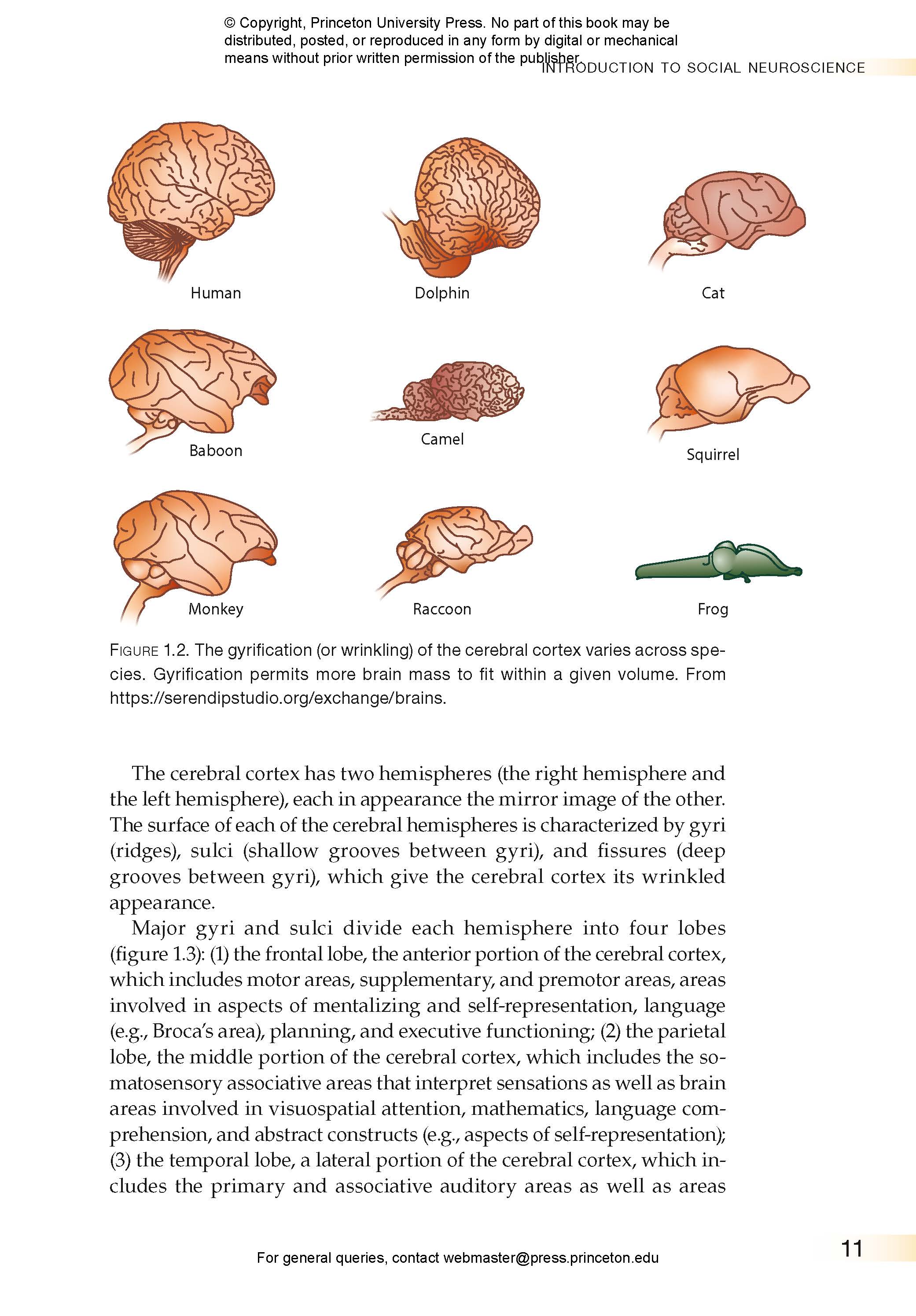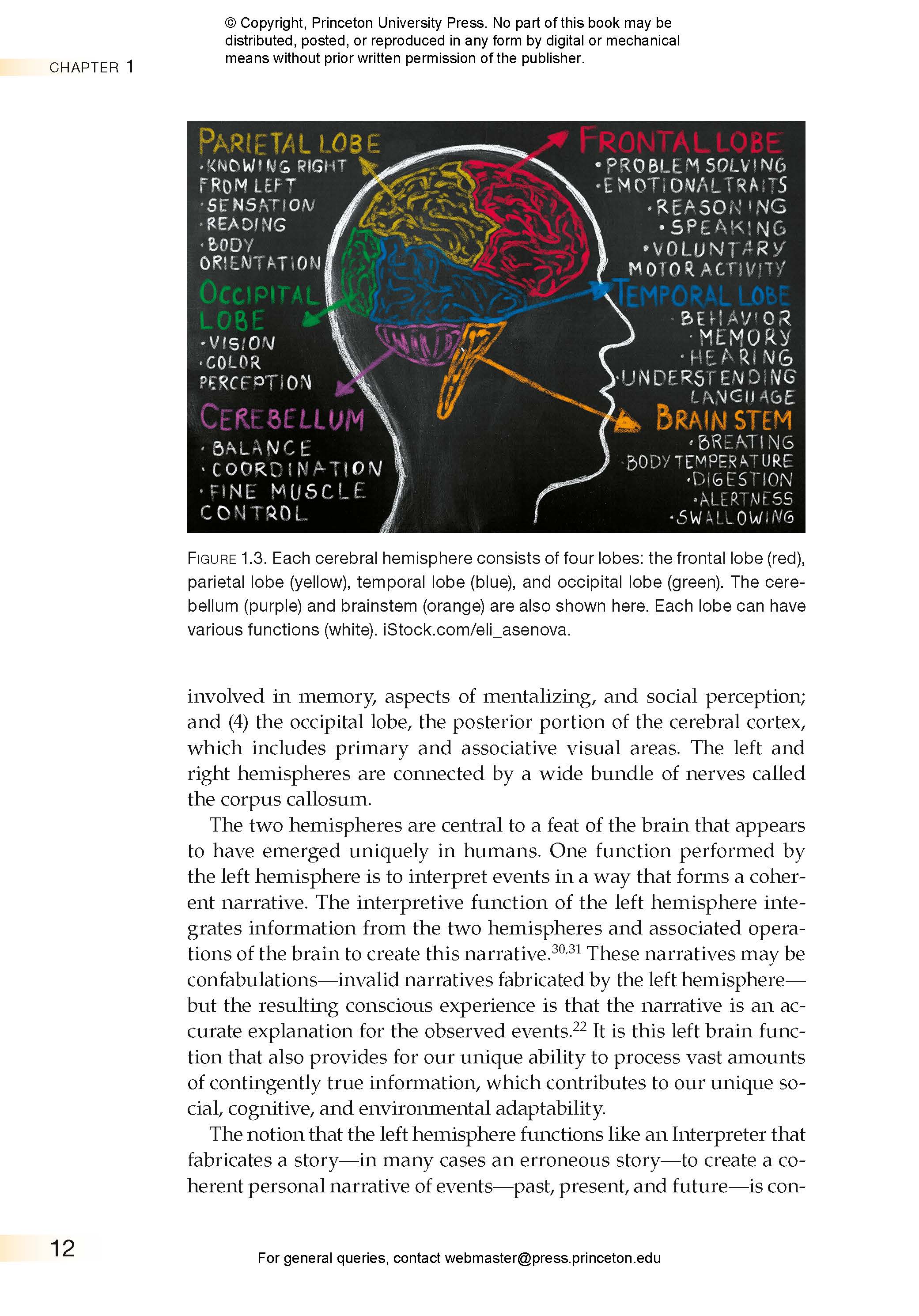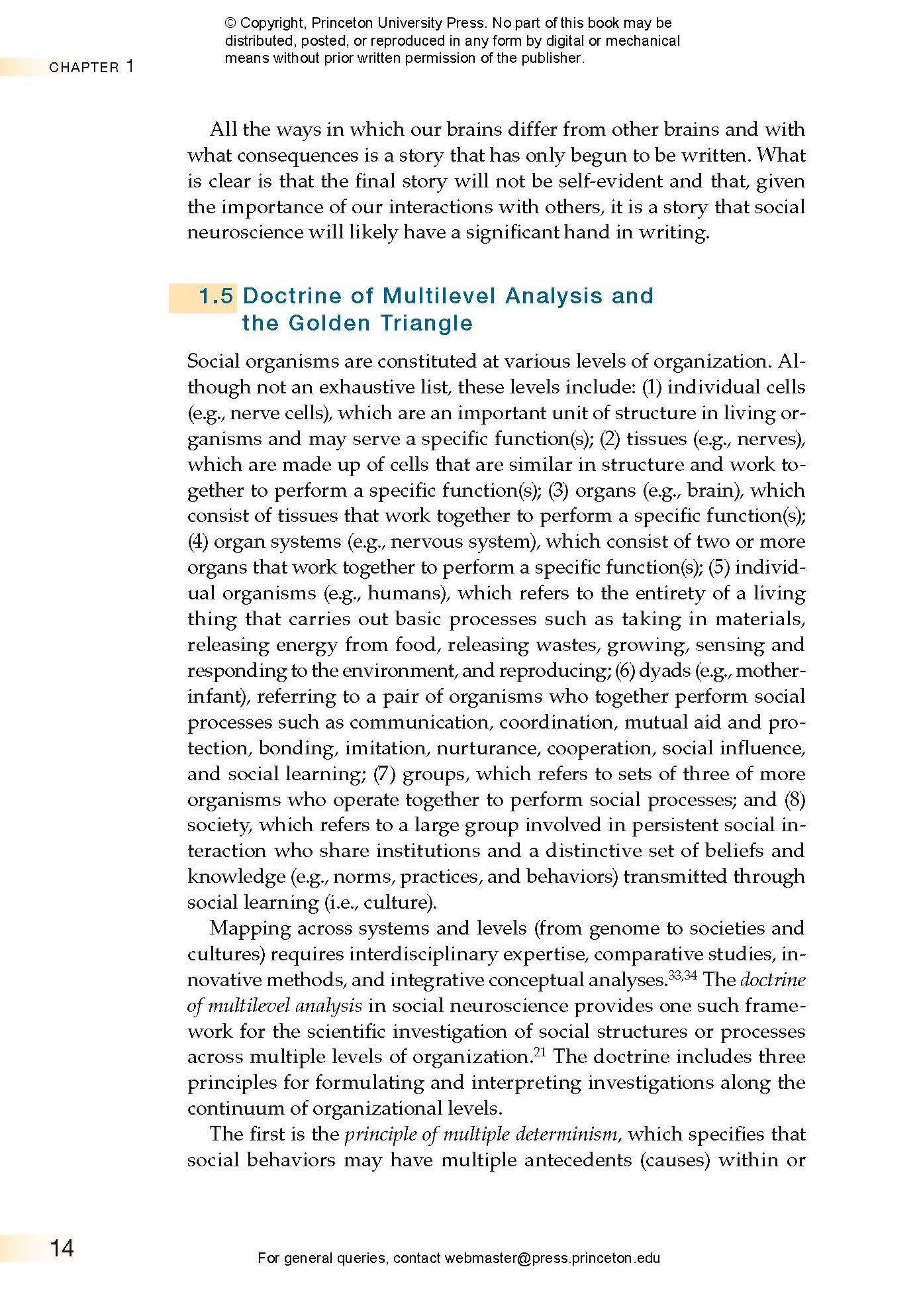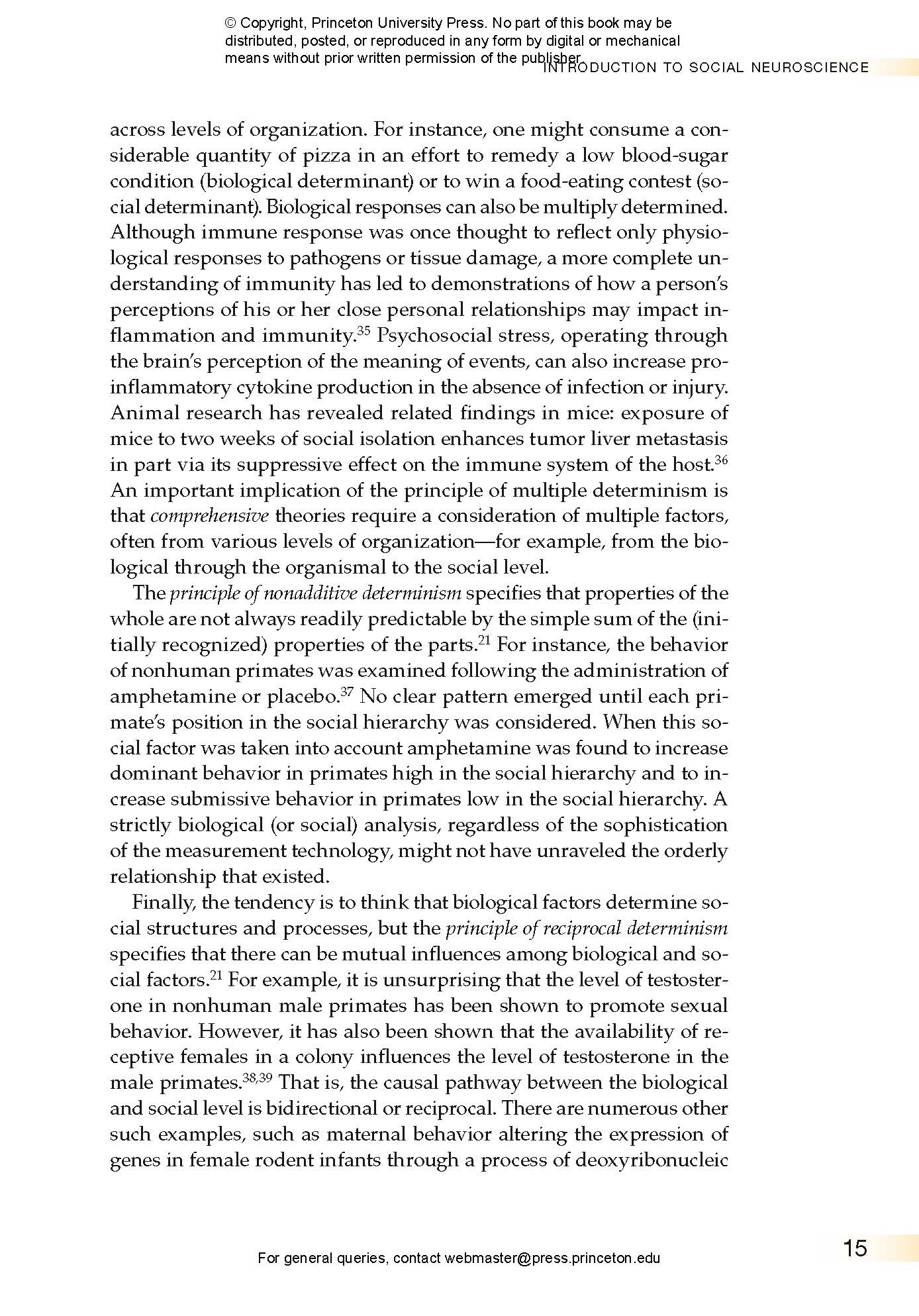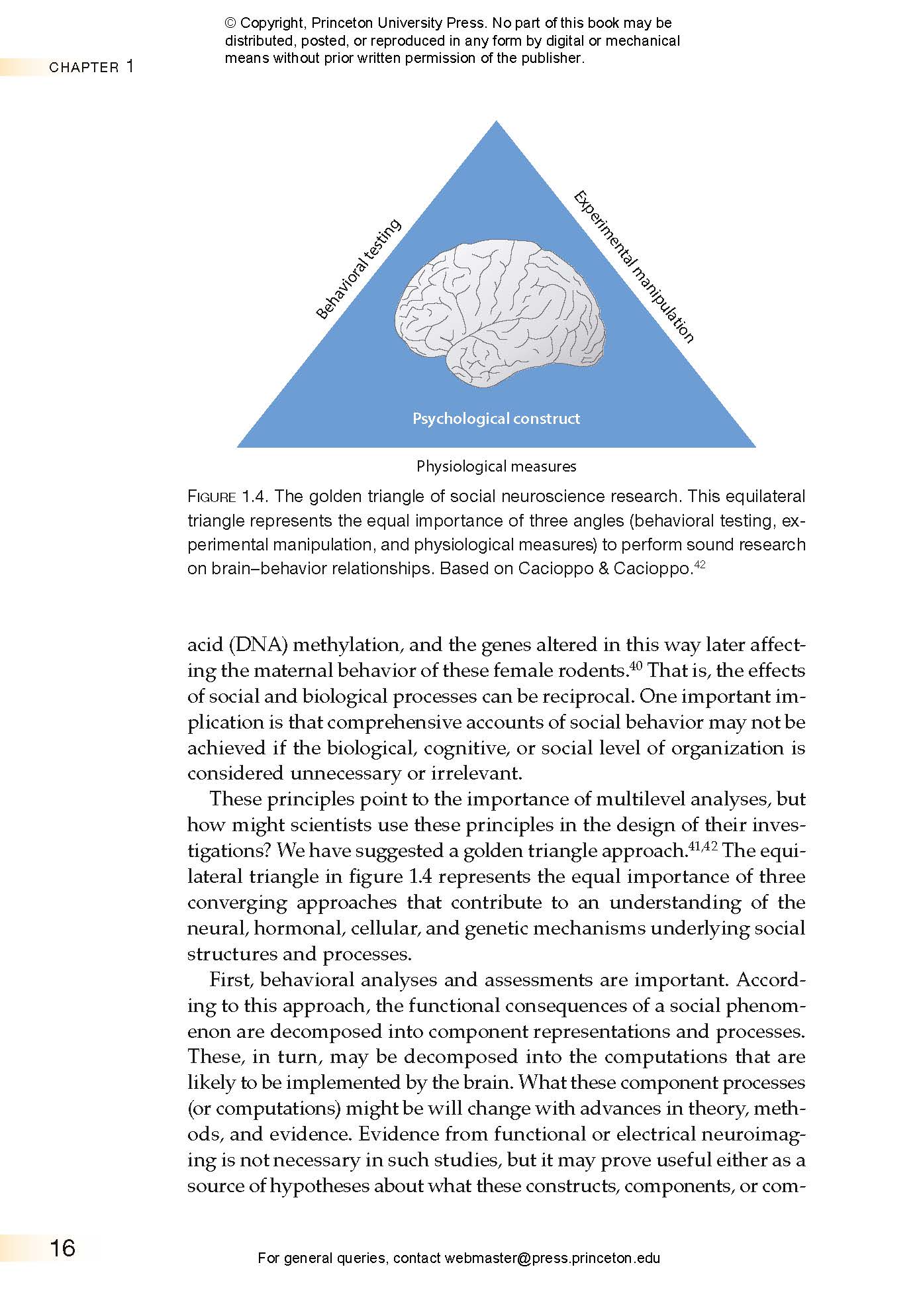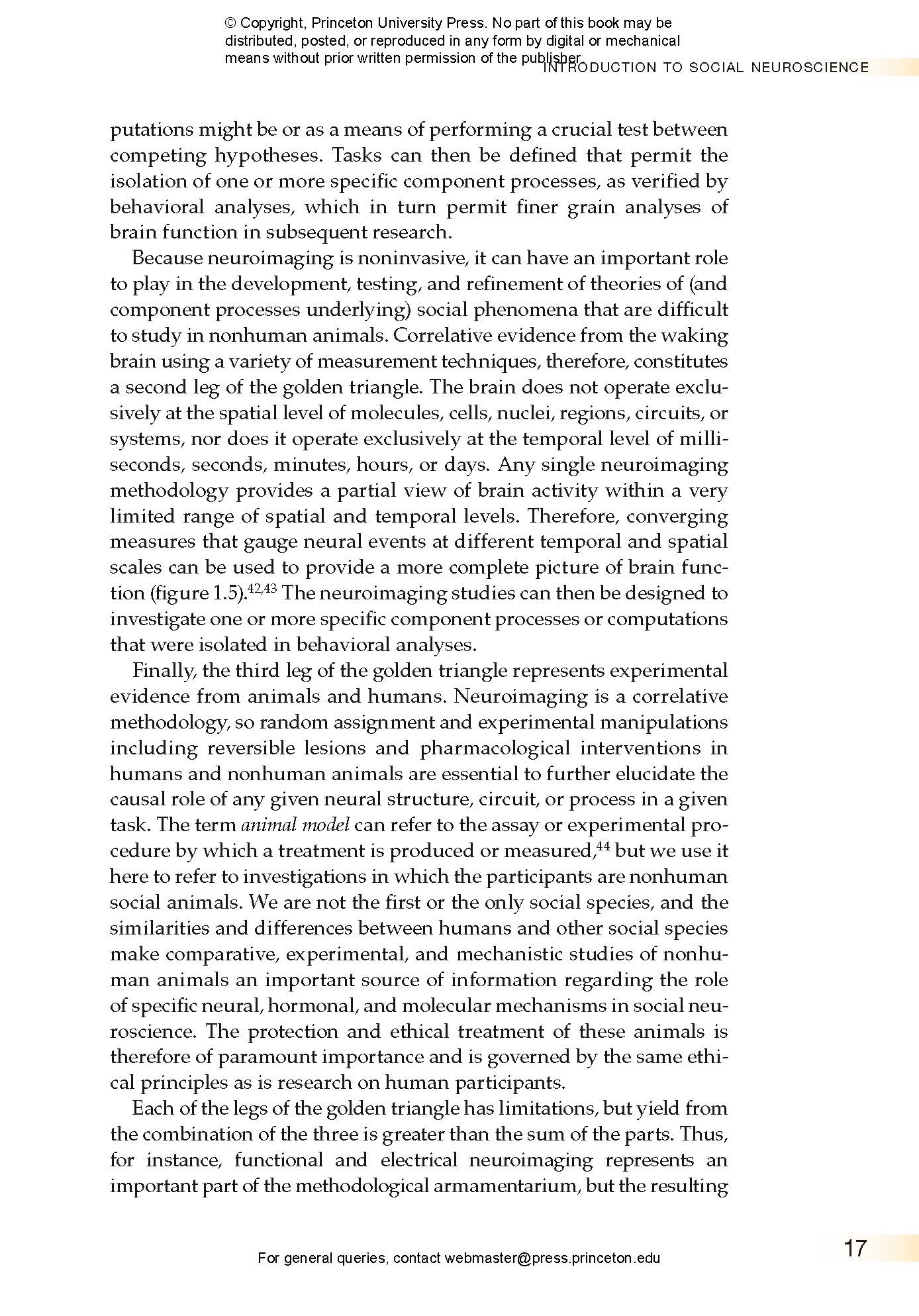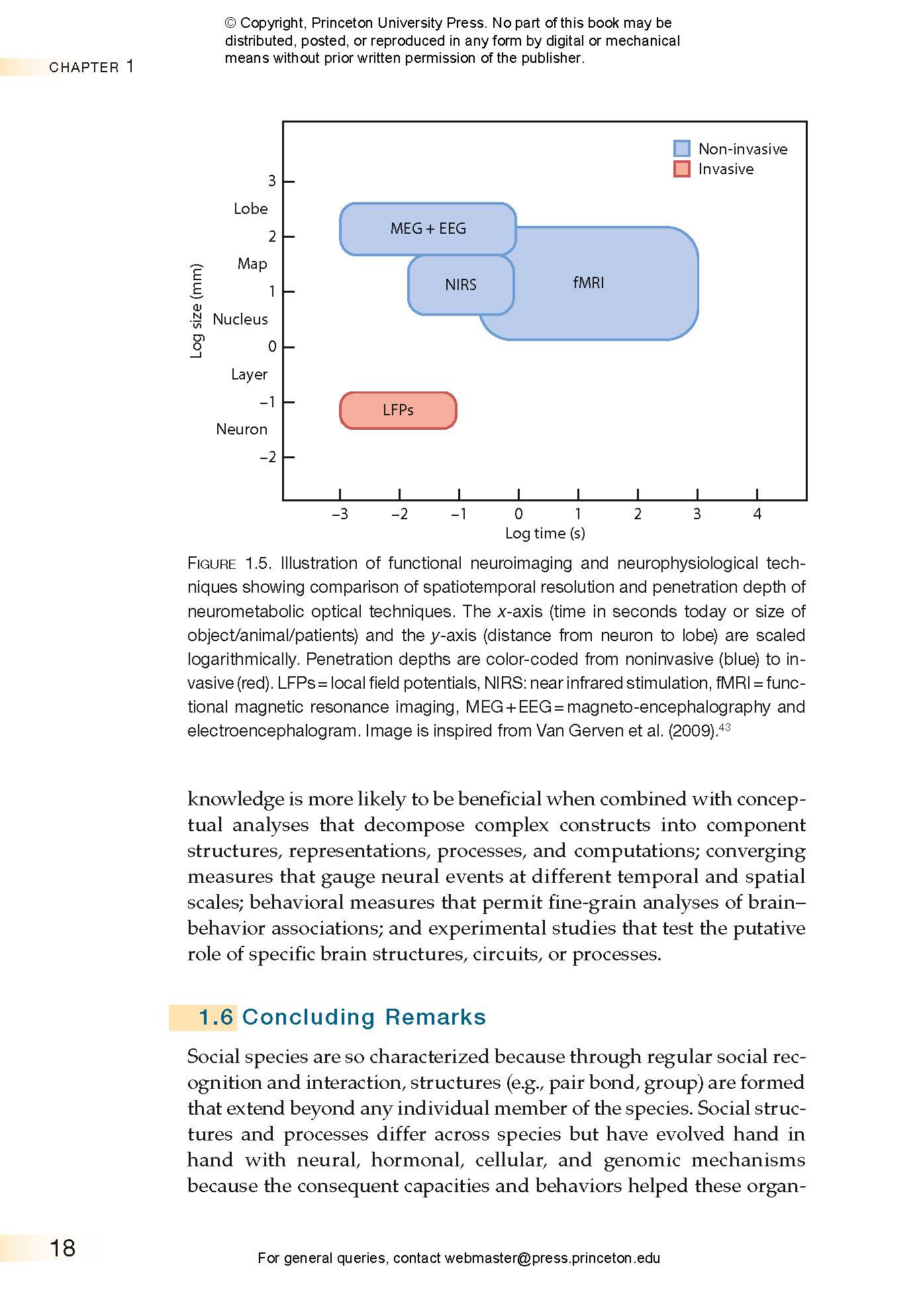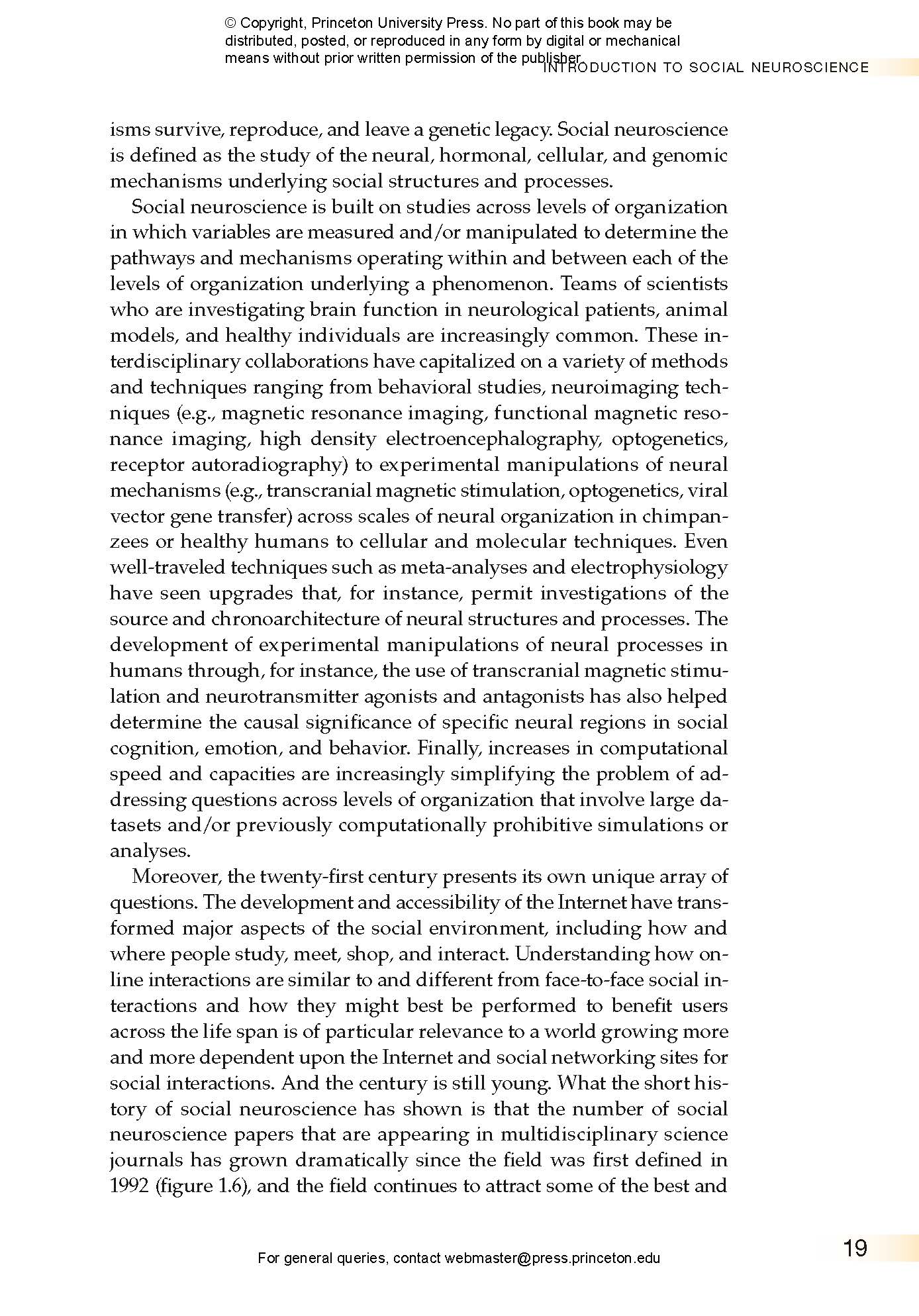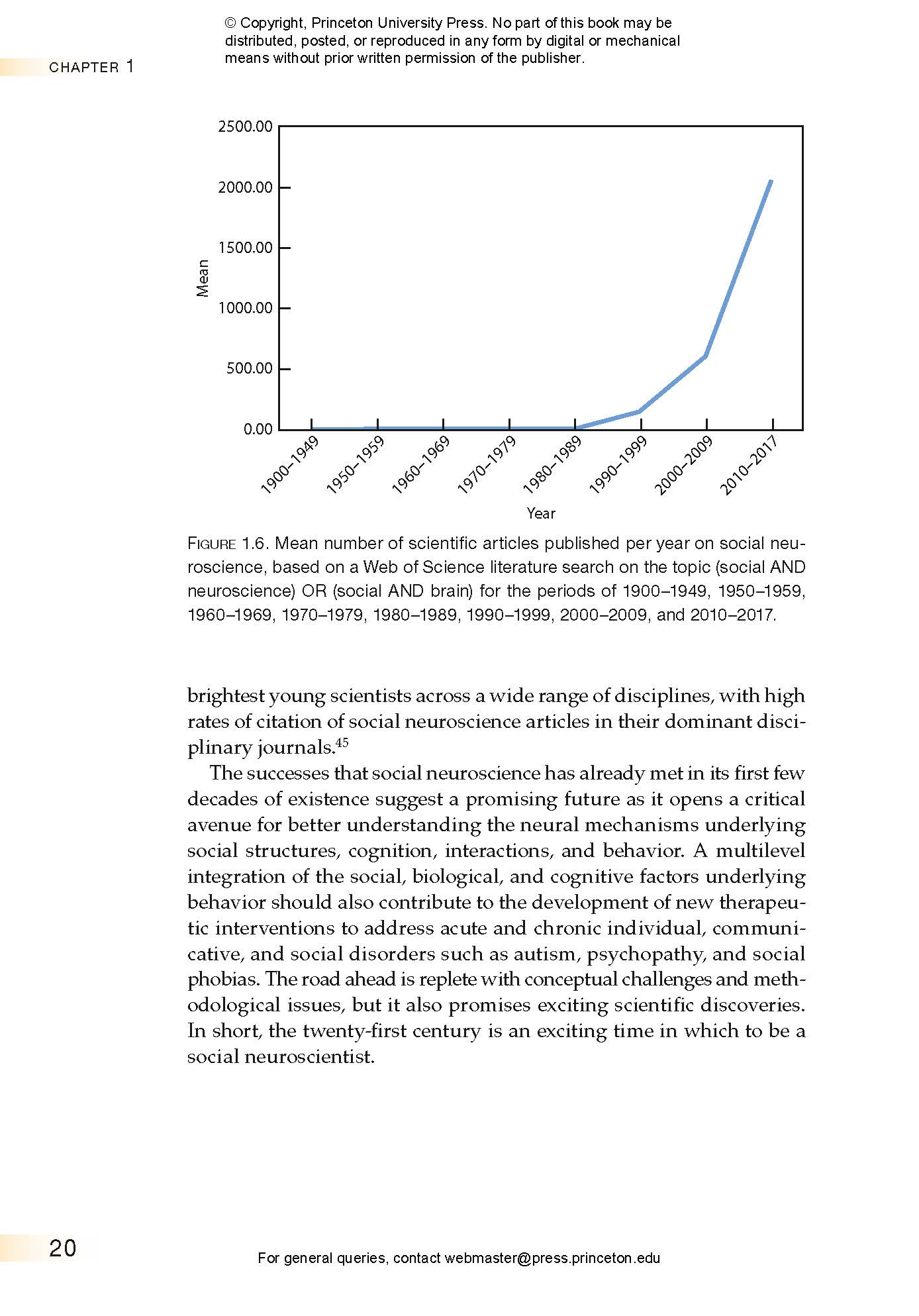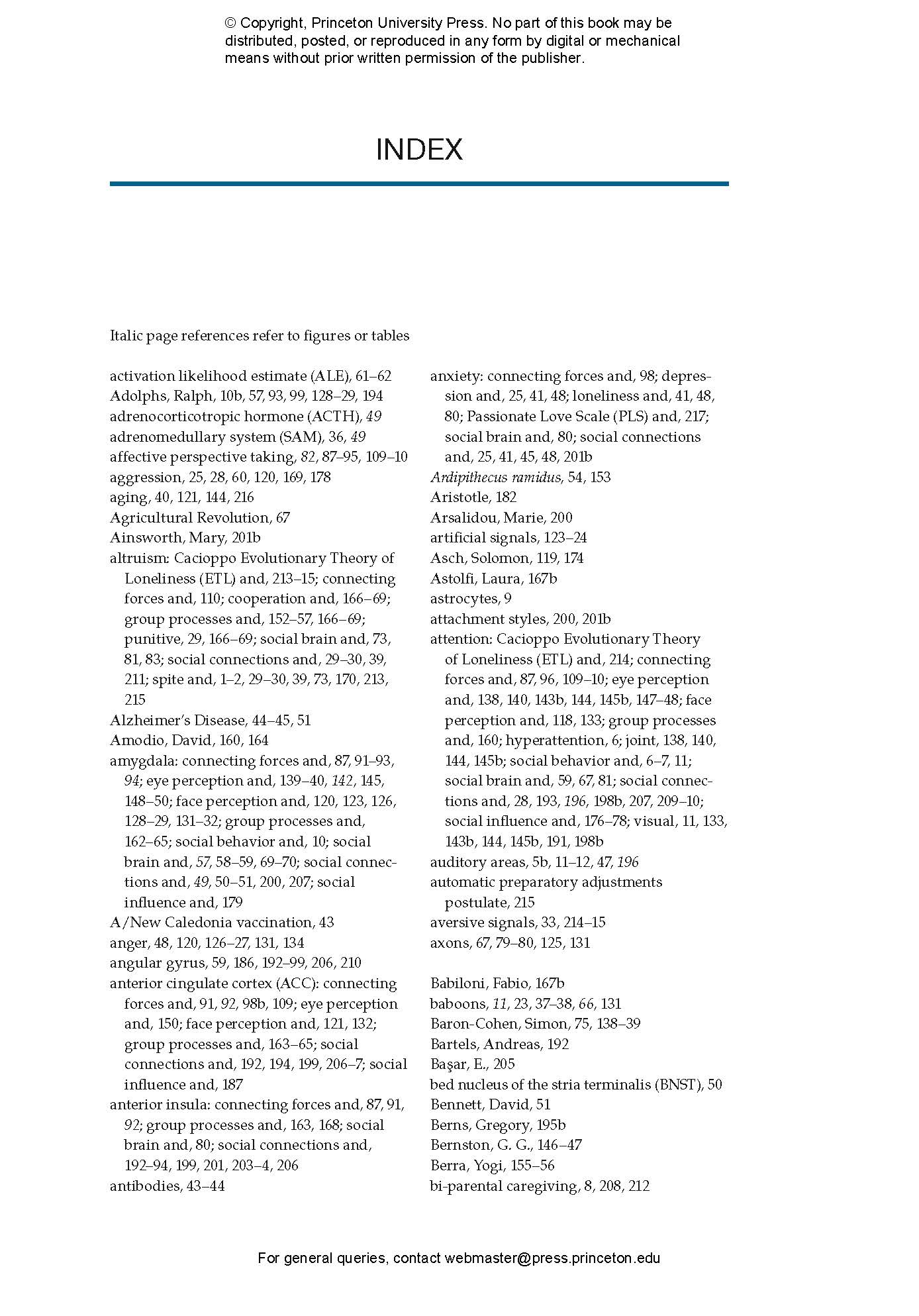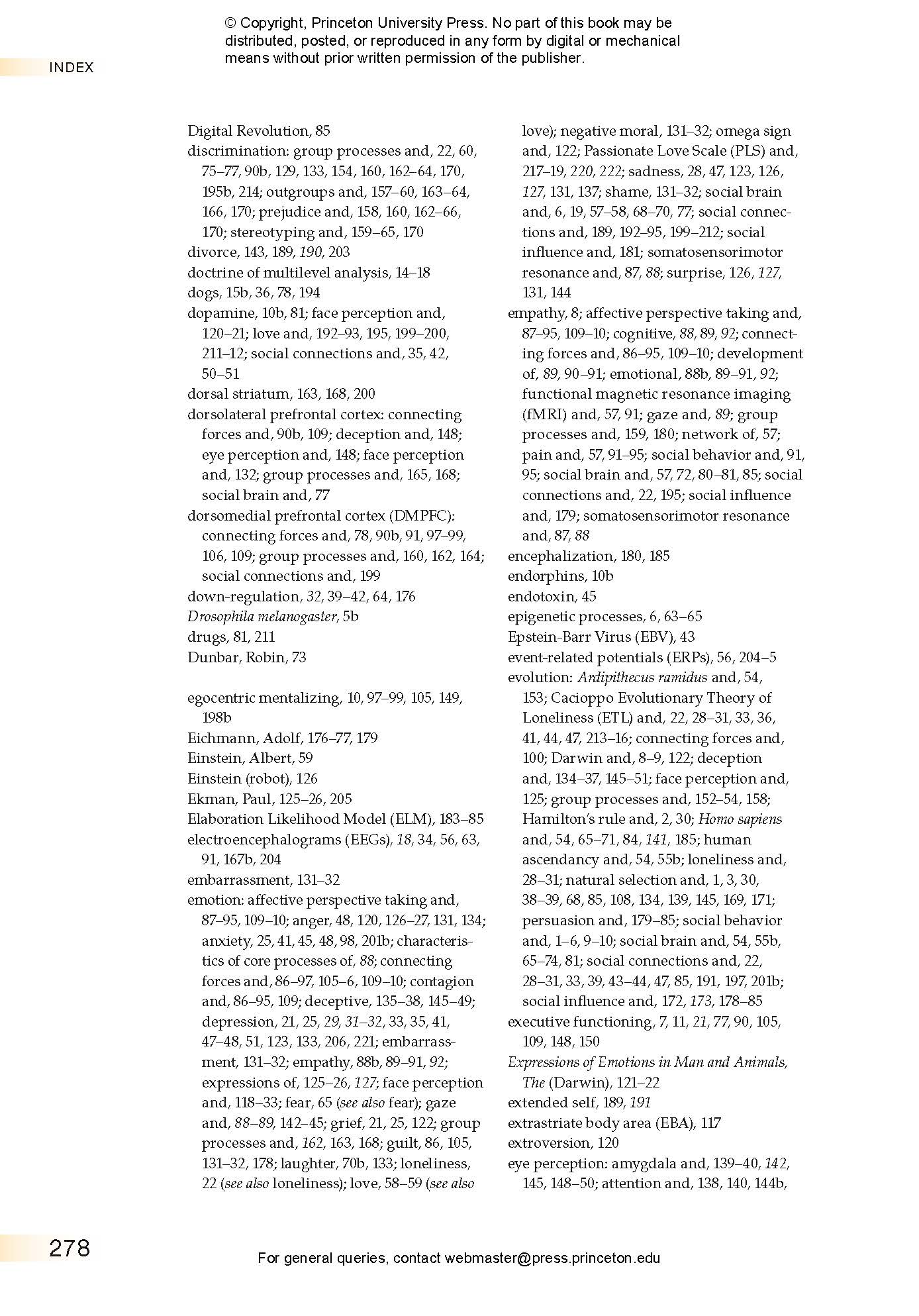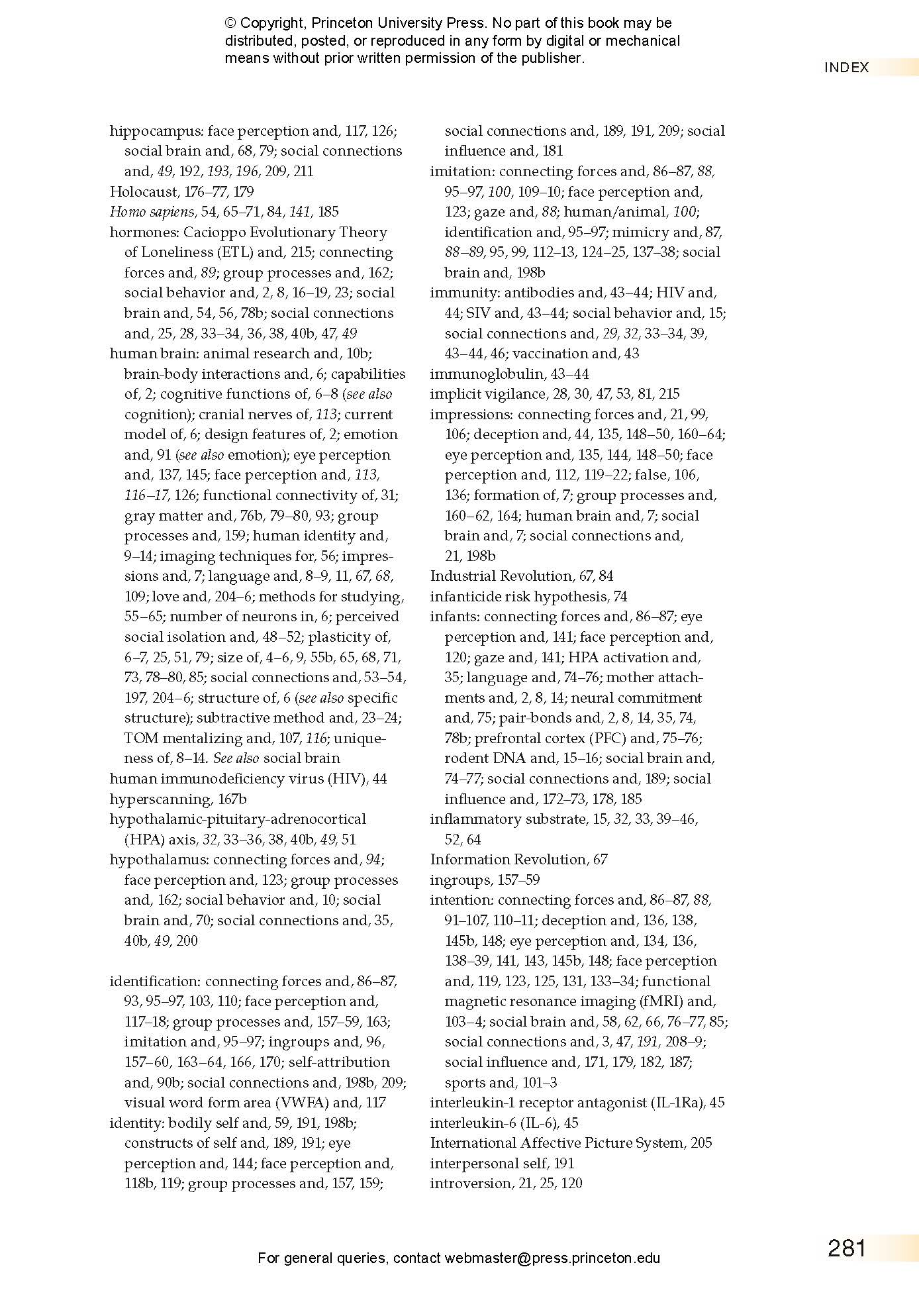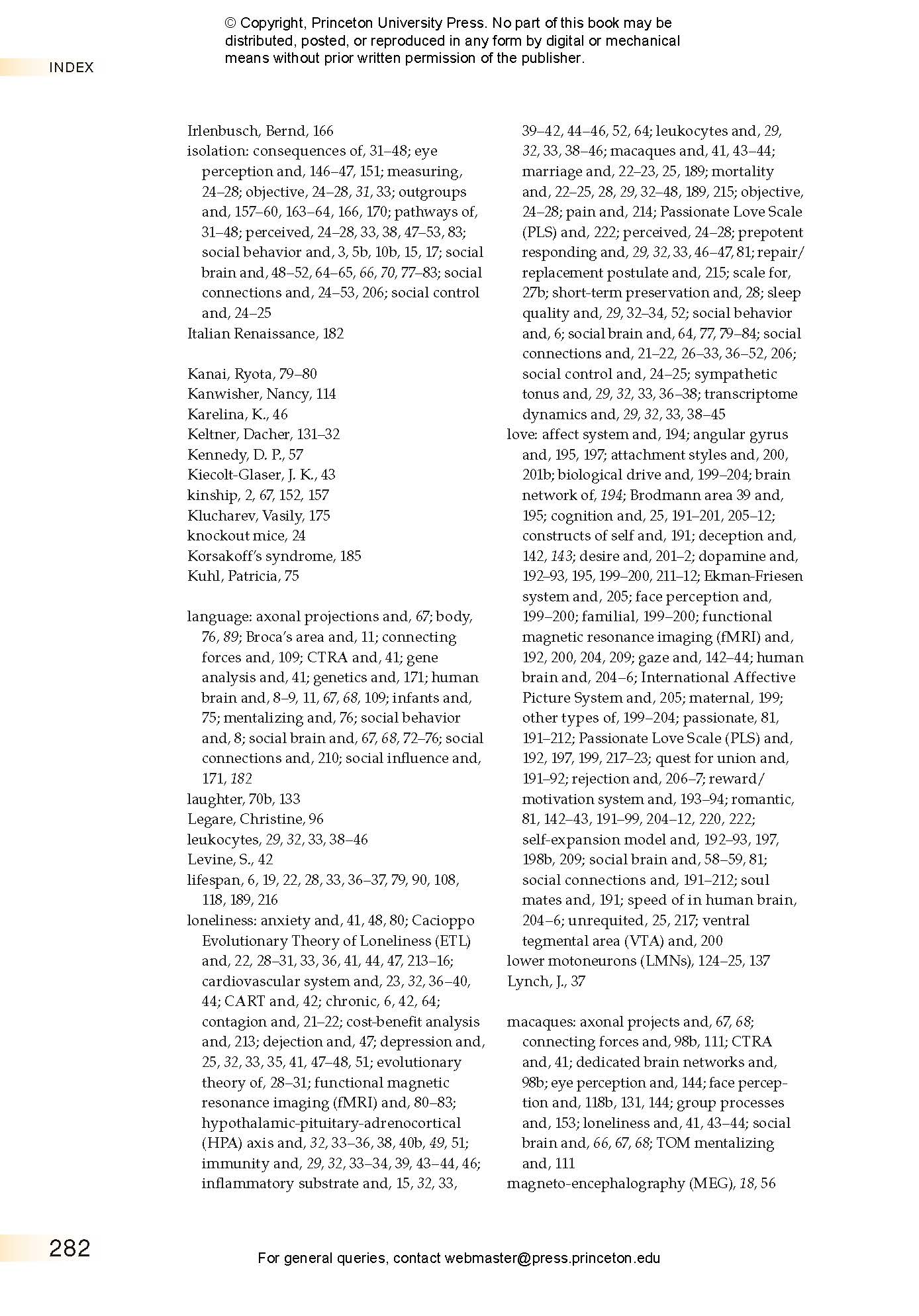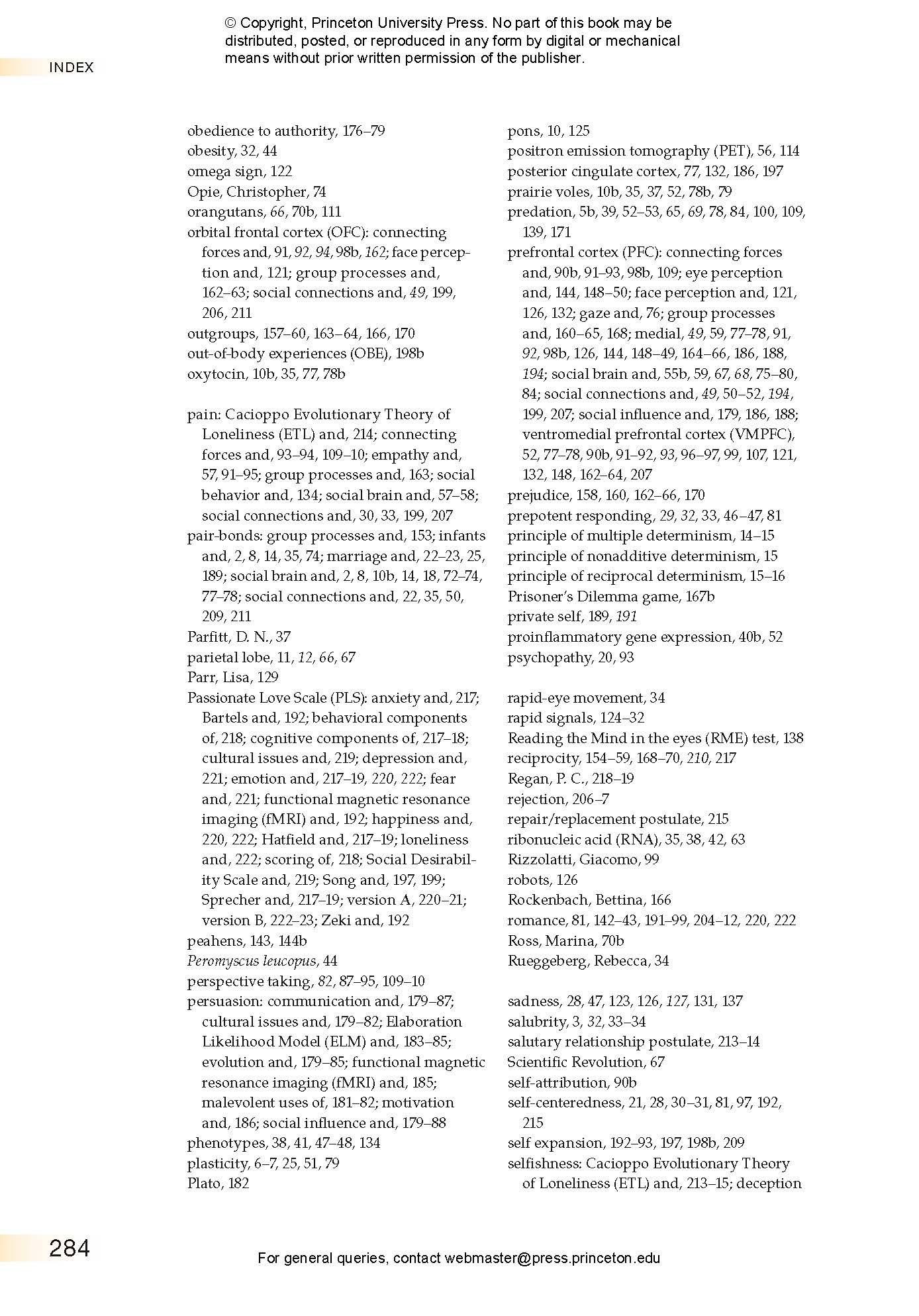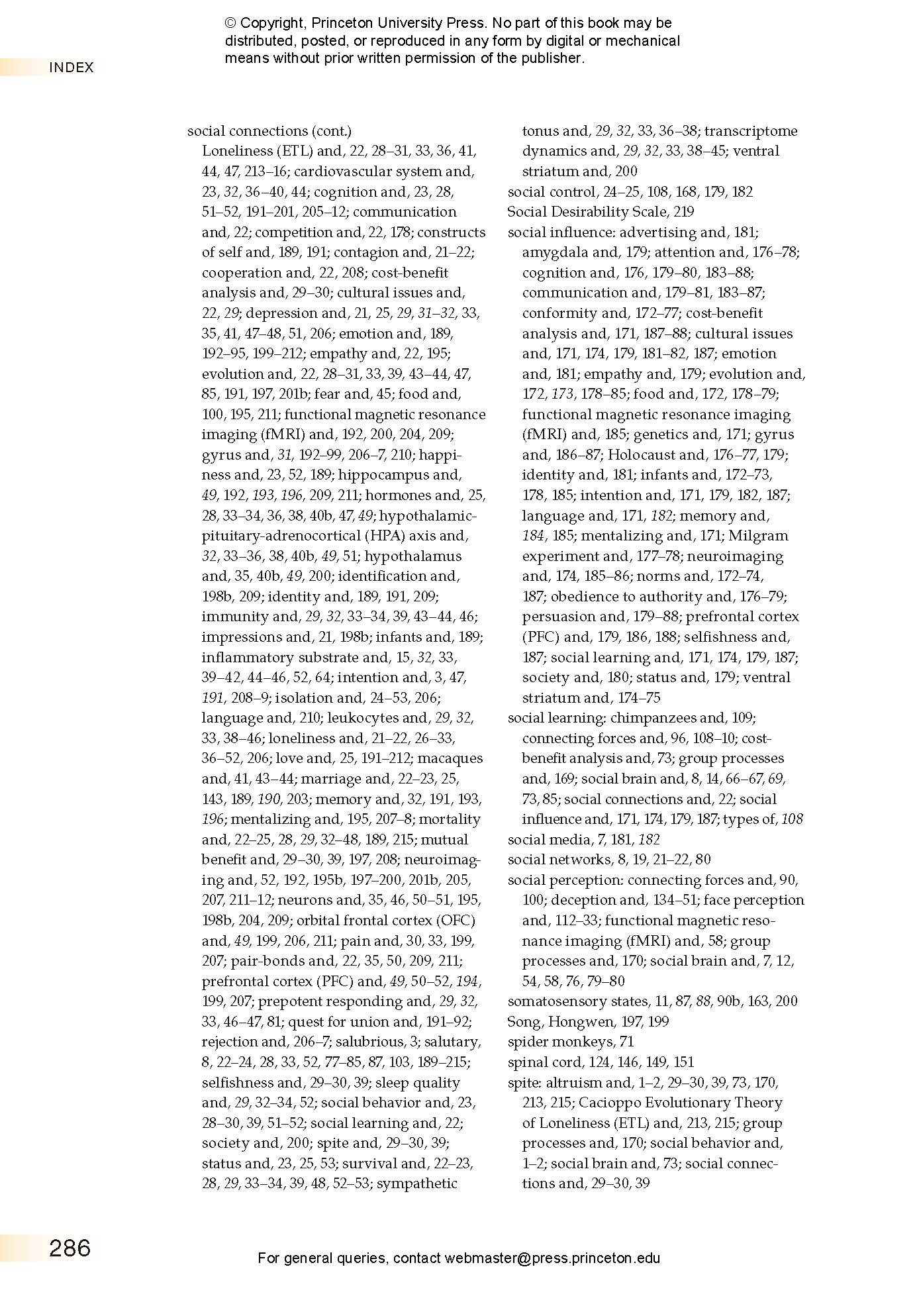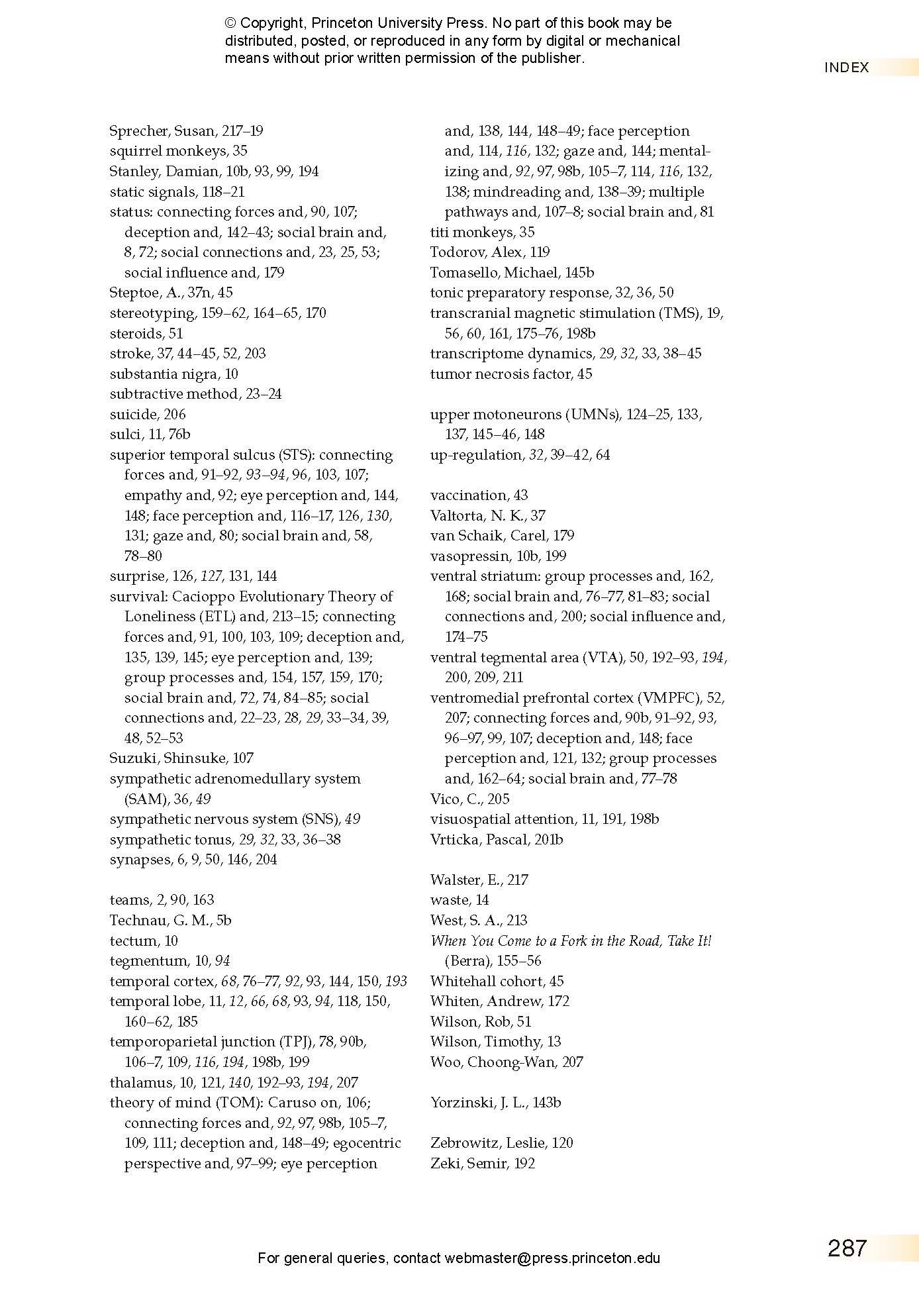Humans, like many other animals, are a highly social species. But how do our biological systems implement social behaviors, and how do these processes shape the brain and biology? Spanning multiple disciplines, Introduction to Social Neuroscience seeks to engage students and scholars alike in exploring the effects of the brain’s perceived connections with others. This wide-ranging textbook provides a quintessential foundation for comprehending the psychological, neural, hormonal, cellular, and genomic mechanisms underlying such varied social processes as loneliness, empathy, theory-of-mind, trust, and cooperation.
Stephanie and John Cacioppo posit that our brain is our main social organ. They show how the same objective relationship can be perceived as friendly or threatening depending on the mental states of the individuals involved in that relationship. They present exercises and evidence-based findings readers can put into practice to better understand the neural roots of the social brain and the cognitive and health implications of a dysfunctional social brain. This textbook’s distinctive features include the integration of human and animal studies, clinical cases from medicine, multilevel analyses of topics from genes to societies, and a variety of methodologies.
Unveiling new facets to the study of the social brain’s anatomy and function, Introduction to Social Neuroscience widens the scientific lens on human interaction in society.
- The first textbook on social neuroscience intended for advanced undergraduates and graduate students
- Chapters address the psychological, neural, hormonal, cellular, and genomic mechanisms underlying the brain’s perceived connections with others
- Materials integrate human and animal studies, clinical cases, multilevel analyses, and multiple disciplines
Awards and Recognition
- Winner of the PROSE Award in Psychology and Applied Social Work, Association of American Publishers
Stephanie Cacioppo is the first female president of the Society for Social Neuroscience and is assistant professor of psychiatry and behavioral neuroscience at the University of Chicago Pritzker School of Medicine, where she also directs the brain dynamics laboratory. John T. Cacioppo (1951–2018) was the Tiffany and Margaret Blake Distinguished Service Professor and director of the Center for Cognitive and Social Neuroscience at the University of Chicago. He coined the term “social neuroscience” in 1992, and his many books include Handbook of Neuroscience for the Behavioral Sciences (Wiley) and Loneliness (Norton).
- List of Illustrations
- 1. AN INTRODUCTION TO SOCIAL NEUROSCIENCE
- 1.1 The Evolution of Social Behaviors
- 1.2 The Social Brain of the Desert Locust
- 1.3 Neuroscience and Social Neuroscience
- 1.4 What Makes Us Human?
- 1.5 Doctrine of Multilevel Analysis and the Golden Triangle
- 1.6. Concluding Remarks
- 2. SOCIAL CONNECTIONS MATTER
- 2.1 Salutary Social Connections
- 2.2 Measuring Objective and Perceived Social Isolation
- 2.3 The Evolutionary Theory of Loneliness
- 2.4 Pathways and Consequences of Social Isolation
- 2.4.1 Theoretical pathways linking loneliness to mortality in the modern world
- 2.5 Perceived Social Isolation and the Brain
- 2.6 Concluding Remarks
- 3. THE SOCIAL BRAIN
- 3.1 Methods for the Study of the Social Brain
- 3.1.1 Neuroimaging Methods
- 3.1.2 Epigenetic Processes and Gene Expressions of the Social Brain
- 3.2 Evolution of the Social Brain
- 3.2.1 The Emergence of Homo sapiens
- 3.2.2 The Social Brain Hypothesis
- 3.3 Development of the Social Brain in Infancy
- 3.4 Development of the Social Brain with Salutary Relationships
- 3.5 Concluding Remarks
- 4. CONNECTING FORCES
- 4.1 Emotional Contagion, Affective Perspective Taking, and Empathy
- 4.2 Imitation and Identification
- 4.3 Mentalizing
- 4.3.1 Egocentrism Perspective
- 4.3.2 Simulation Perspective
- 4.3.3 The Theory of Mind Perspective
- 4.3.4 Multiple Pathways
- 4.4 Social Learning
- 4.5 Concluding Remarks
- 5. SOCIAL PERCEPTION: READING THE FACE
- 5.1 Face Perception
- 5.2 Static Signals
- 5.3 Slow Signals
- 5.4 Artificial Signals
- 5.5 Rapid Signals
- 5.5.1 Expressions of Emotion
- 5.5.2 Patient and Animal Research
- 5.5.3 Negative Moral Emotions
- 5.6 Concluding Remarks
- 6. SOCIAL DECEPTION: READING THE EYES
- 6.1 Deceptive Expressions
- 6.2 Reading the Eyes
- 6.3 Gaze Direction
- 6.4 Production and Detection of Deception
- 6.4.1 Functional Organization of the Central Nervous System
- 6.4.2 Deceptive Signals and Expressions Revisited
- 6.5 Integration of Physical, Contextual, and Behavioral Influences
- 6.6 Concluding Remarks
- 7. GROUP PROCESSES
- 7.1 Interspecific and Intraspecific Competition
- 7.2 Reciprocity
- 7.3 Ingroups and Outgroups
- 7.4 The Neuroscience of Prejudice and Stereotyping
- 7.4.1 Stereotyping
- 7.4.2 Prejudice and Discrimination
- 7.4.3 Mitigating Bias
- 7.5 Punitive Altruism and Cooperation
- 7.6 Concluding Remarks
- 8. SOCIAL INFLUENCE
- 8.1 Conformity
- 8.2 Obedience to Authority
- 8.3 Persuasion
- 8.3.1 Evolutionary and Cultural Contributions to Persuasion
- 8.3.2 Communication and Persuasion
- 8.4 Concluding Remarks
- 9. SALUTARY SOCIAL CONNECTIONS
- 9.1 From “Me” to “We”
- 9.2 Passionate Romantic Love
- 9.3 Other Types of Love and Biological Drives
- 9.4 The Speed of Love in the Human Brain
- 9.5 Romantic Rejection
- 9.6 Cognitive Benefits of Love
- 9.6.1 Benefits of Love on Embodied Cognition
- 9.6.2 Benefits of Love on Social Cognition
- 9.7 Concluding Remarks
- APPENDIX A
- The Cacioppo Evolutionary Theory of Loneliness (ETL)
- APPENDIX B
- The Passionate Love Scale
- References
- Index
"This is a superb book with solid figures and tables and a highly readable text. It is an excellent resource, not only as a textbook for advanced undergraduates and graduate students, but also for researchers and the educated lay public."—Bruce McEwen, Rockefeller University
"This work covers a wide range of topics in social neuroscience and references literature that would interest students. The writing style is very accessible. I thank the authors for their Herculean efforts to provide a social neuroscience textbook for those of us who teach in this area."—Aina Puce, Indiana University
"This book introduces readers to the field of social neuroscience by emphasizing an interdisciplinary and cross-cultural approach. Targeting advanced undergraduates, Introduction to Social Neuroscience provides a broad perspective not only on the underlying neural signatures but also on the underlying social cognition that leads to social interaction and behavior."—Frank Krueger, George Mason University
"Containing a wealth of references, this textbook gives a comprehensive and up-to-date overview of topics in social neuroscience. Within each chapter, the authors do a nice job of presenting empirical results as part of a narrative. Those new to social neuroscience will find this book accessible, but it is also a useful resource for researchers in the field."—Sara Verosky, Oberlin College
